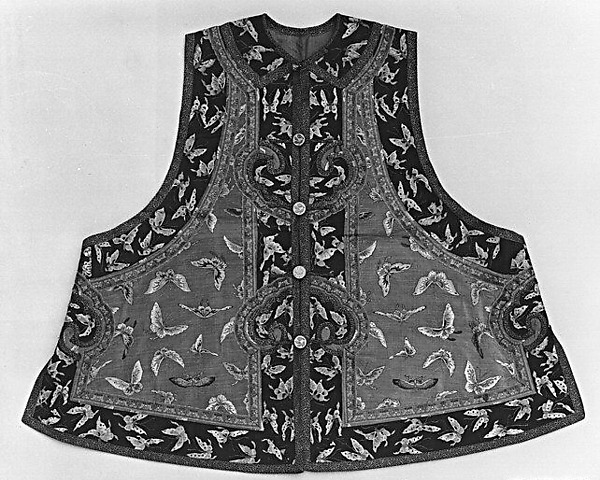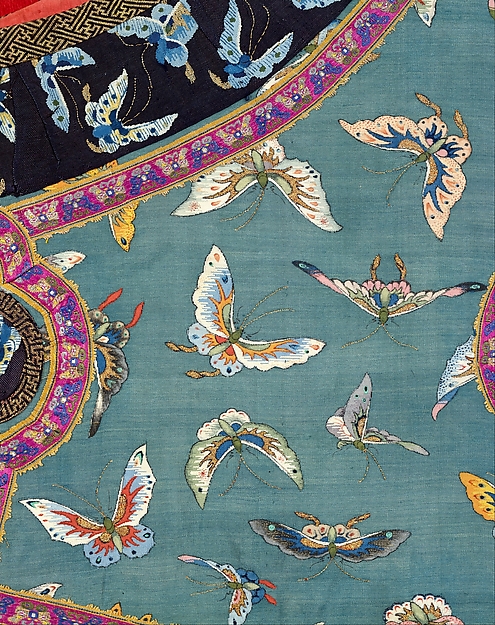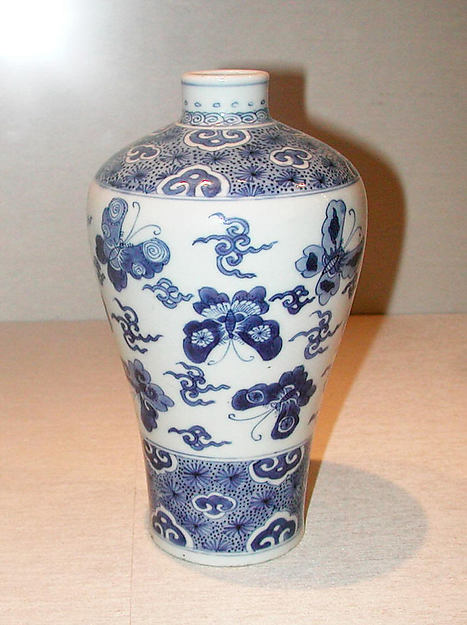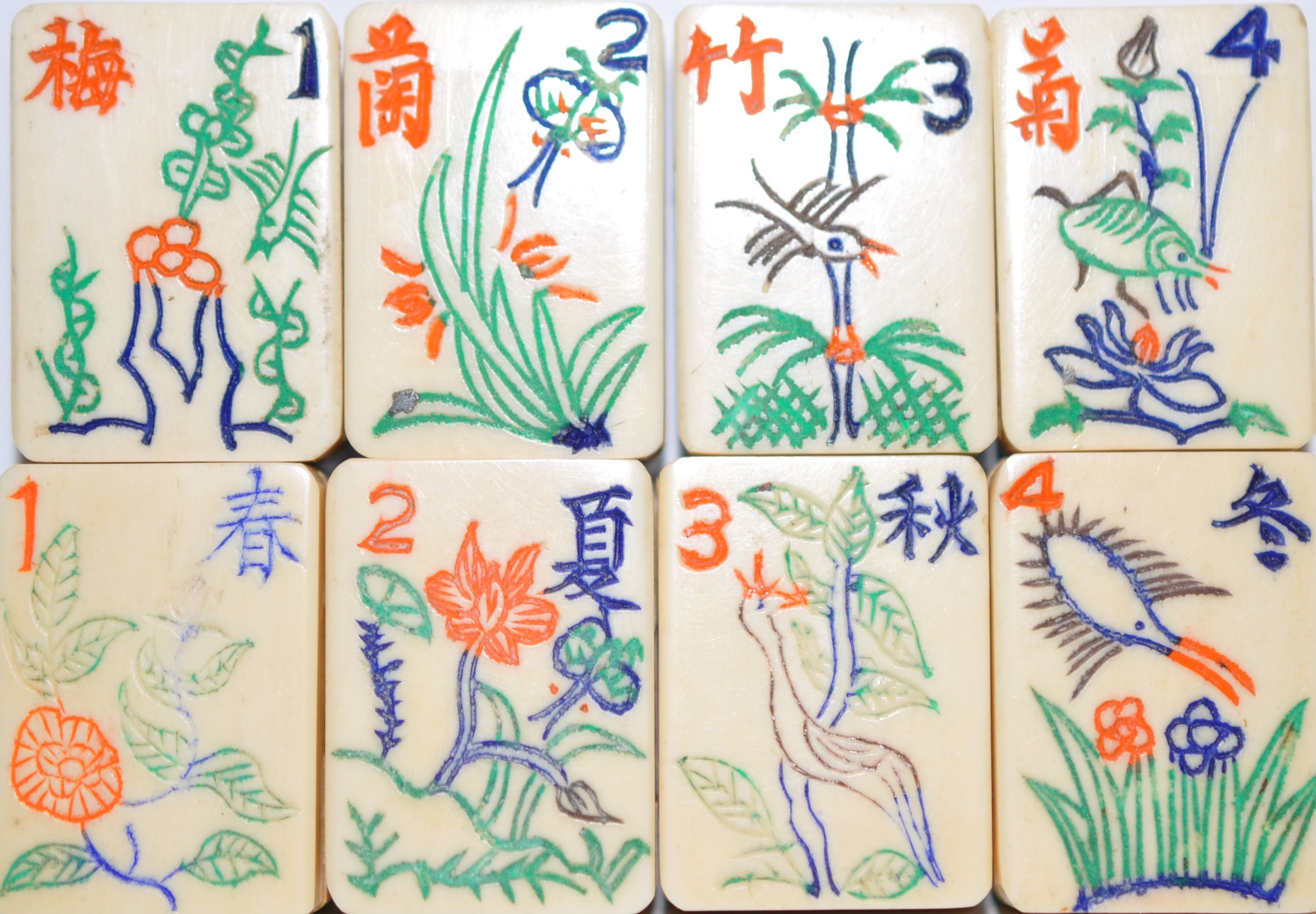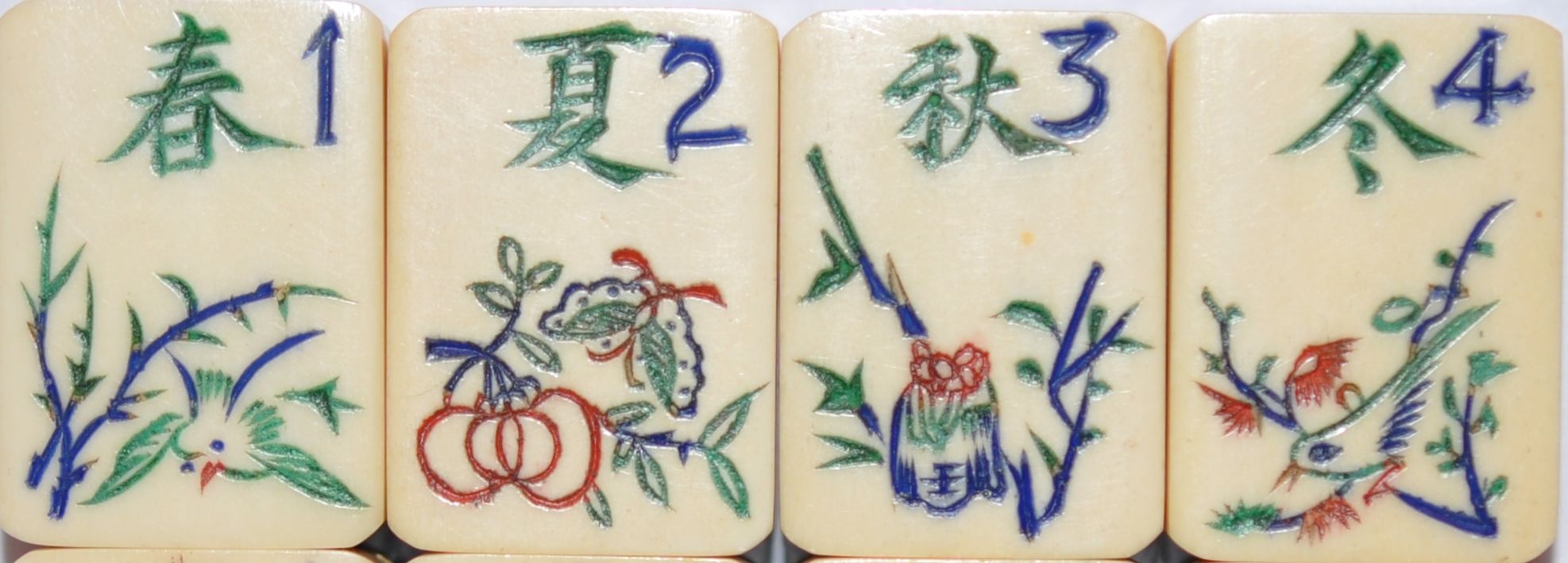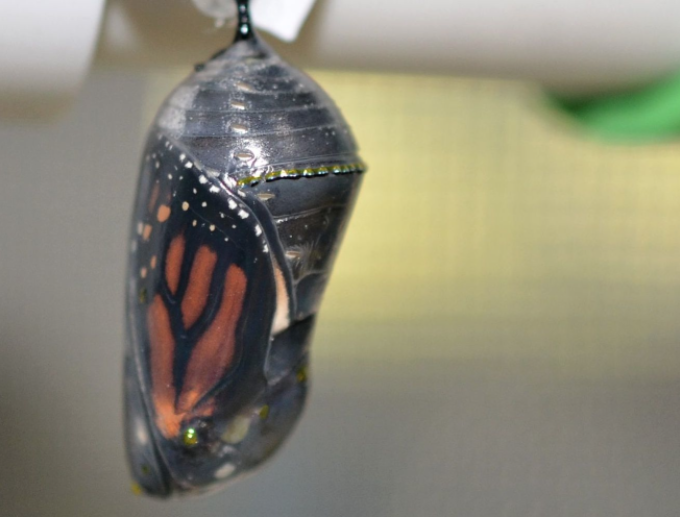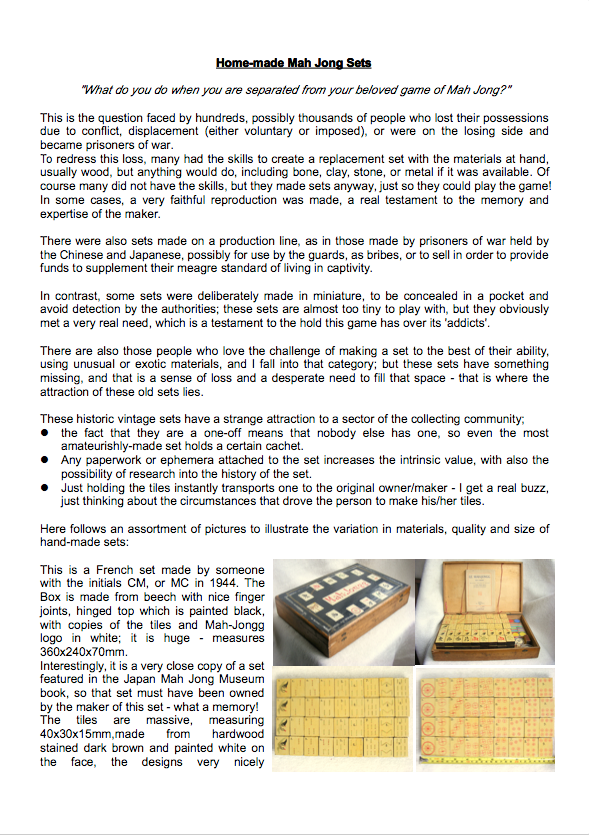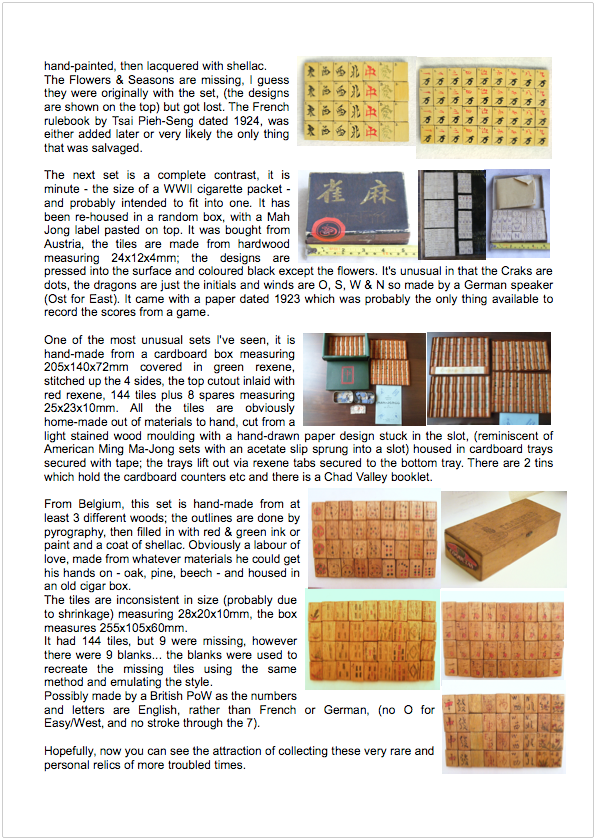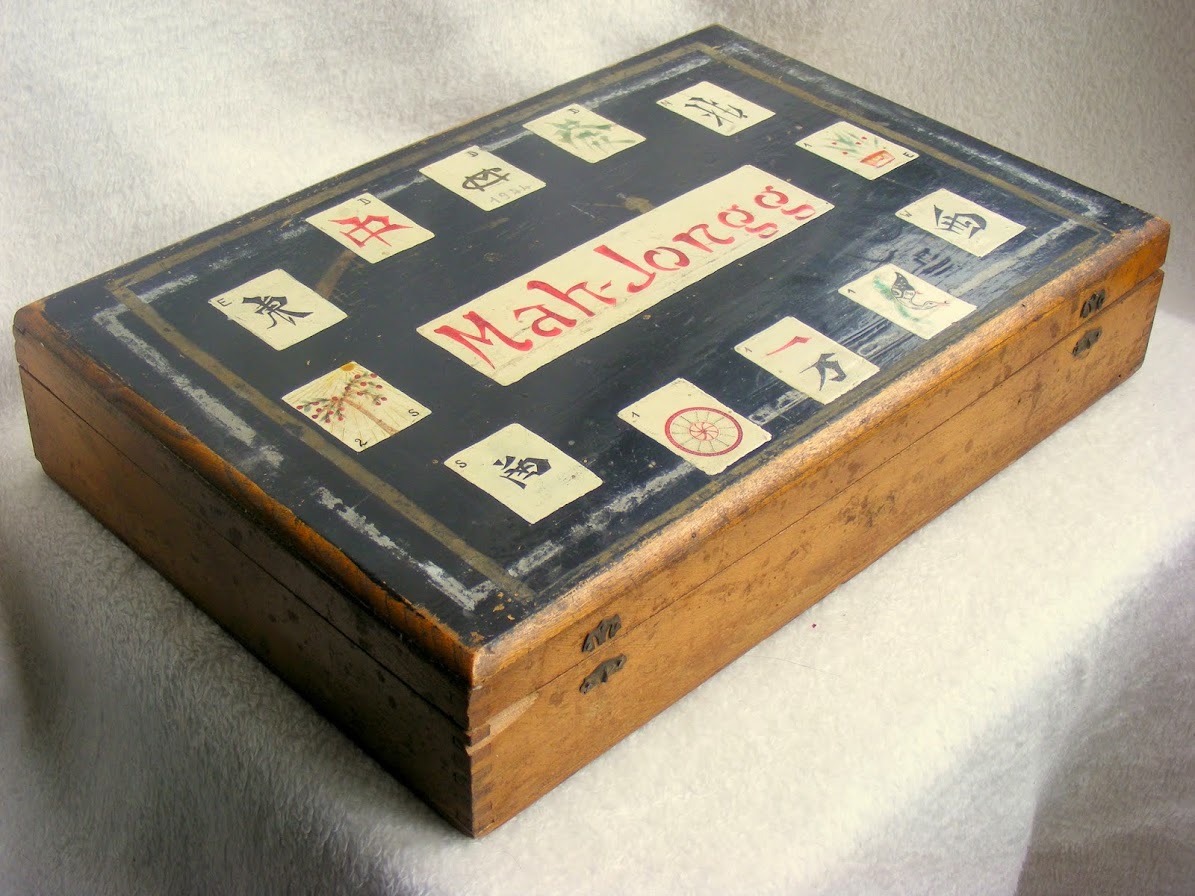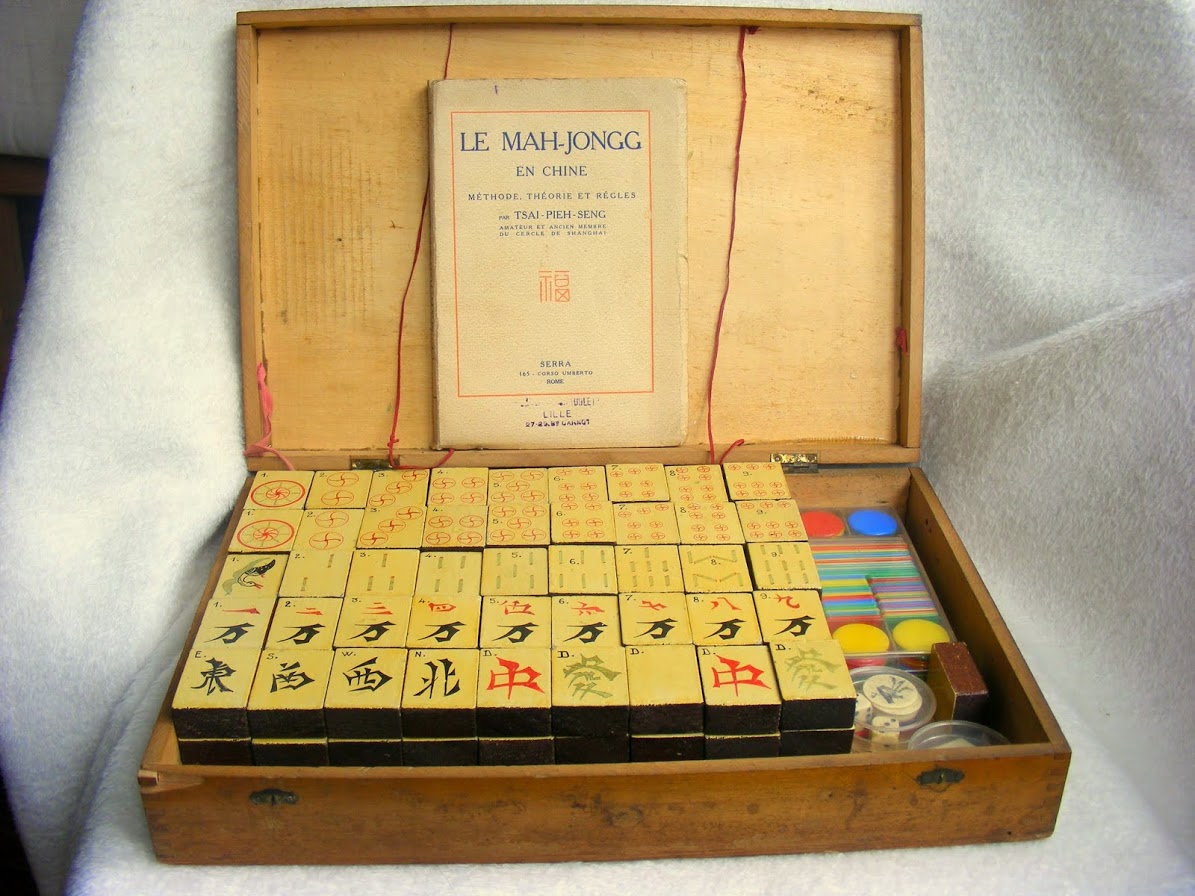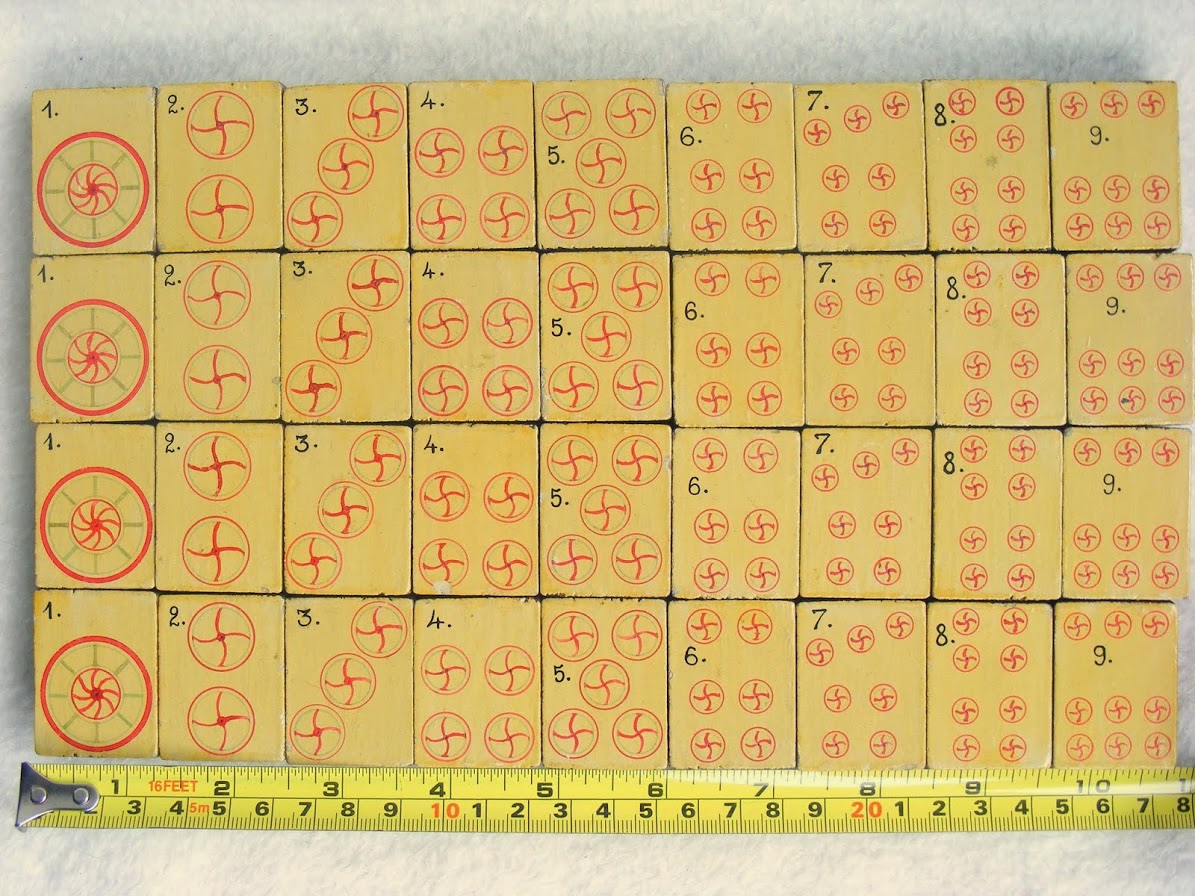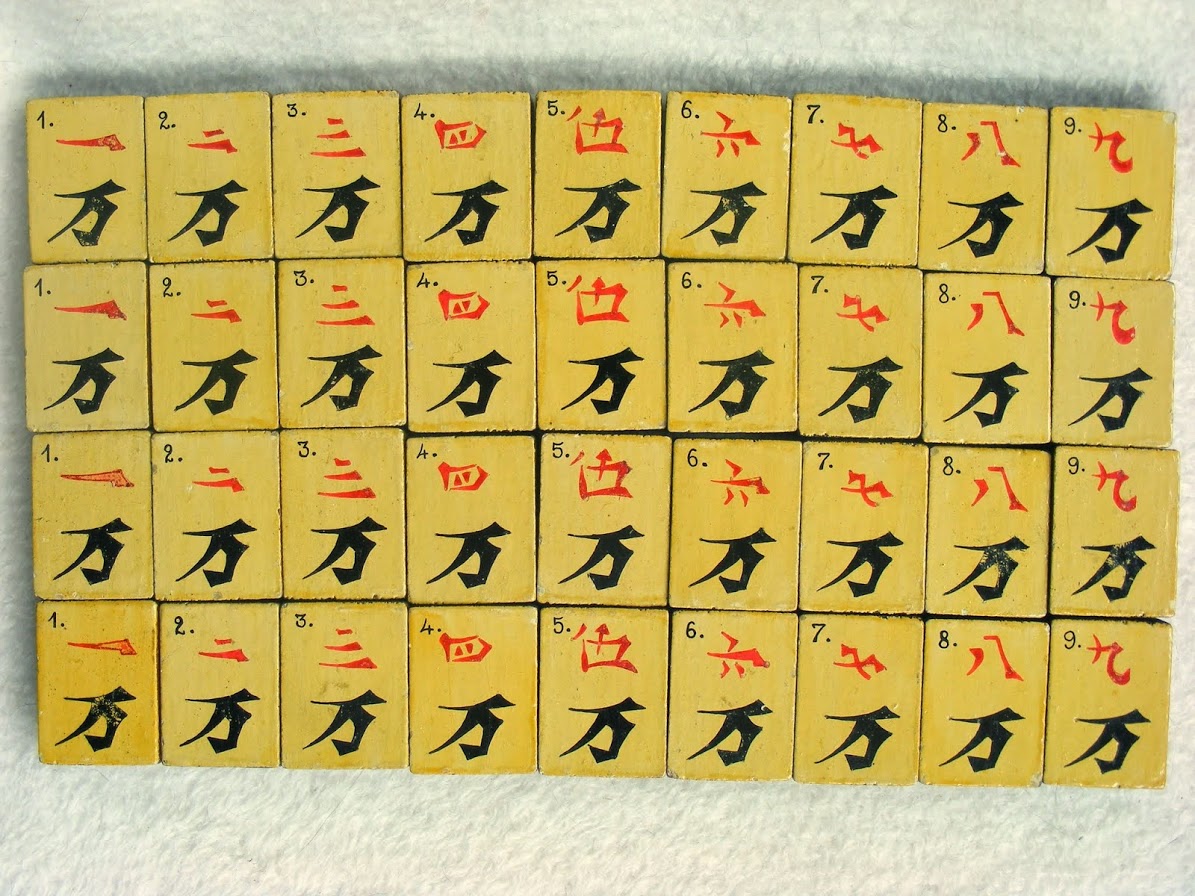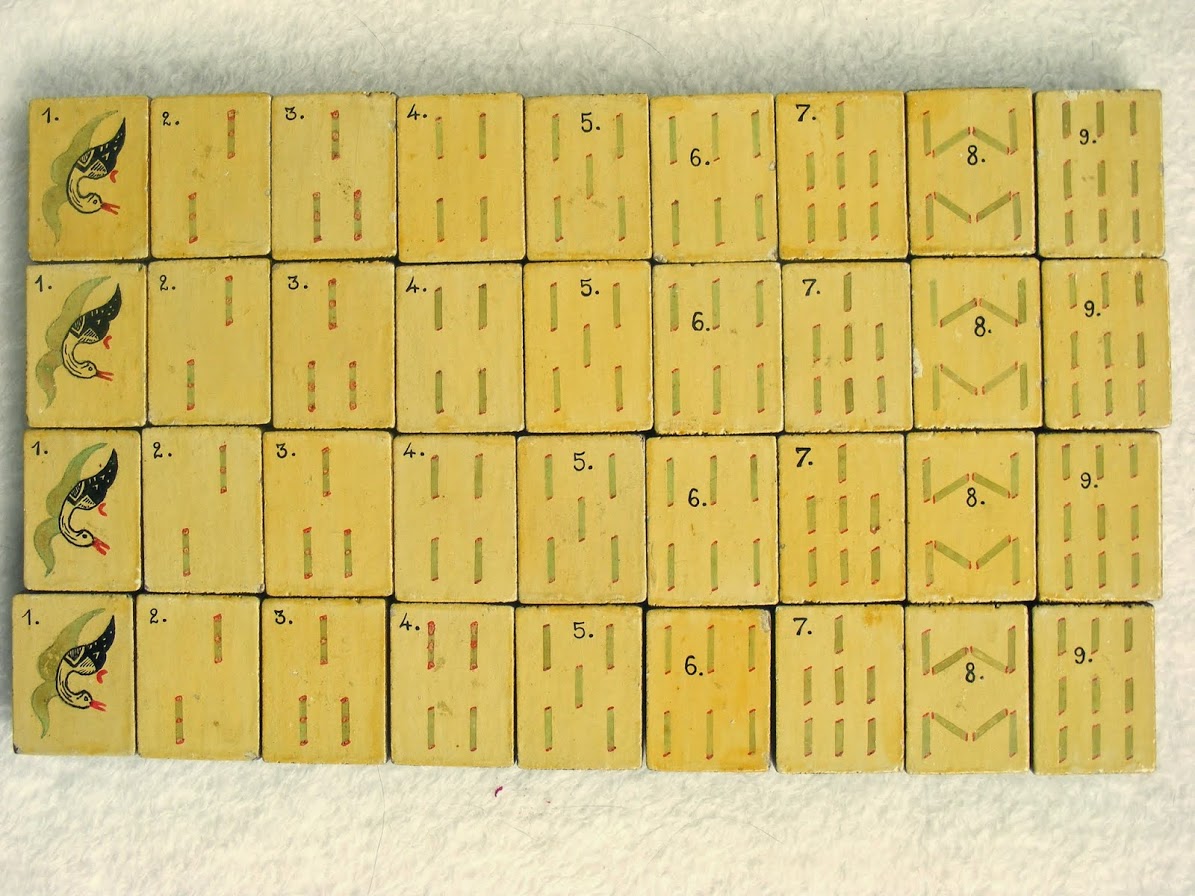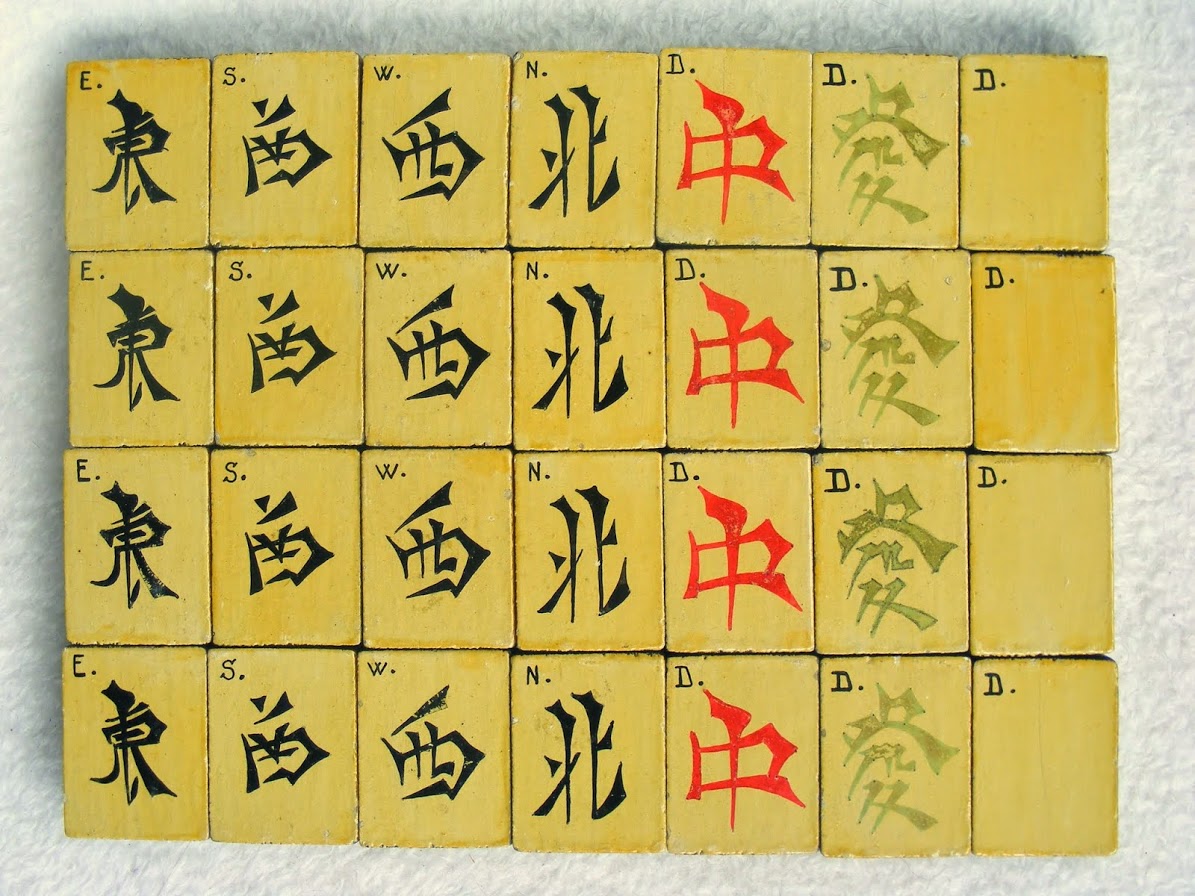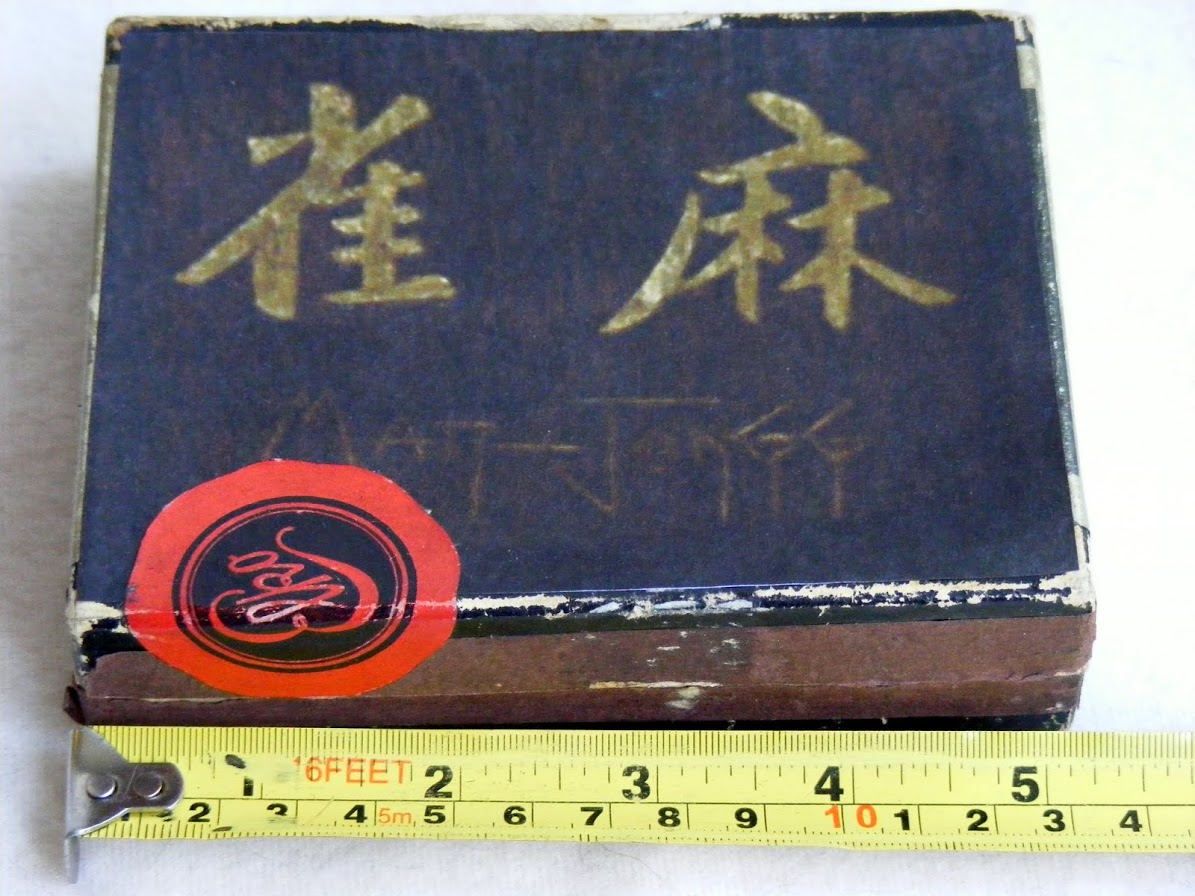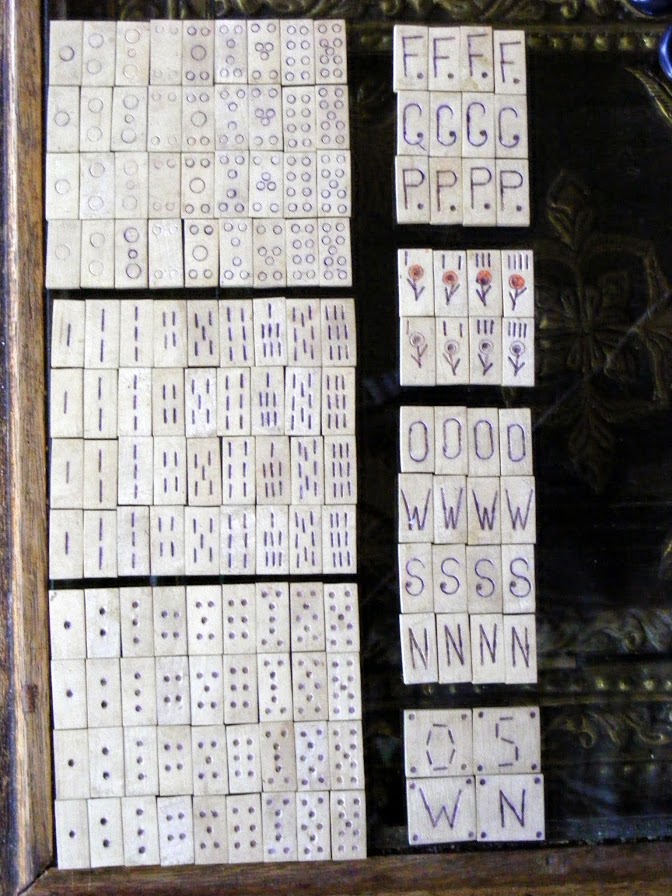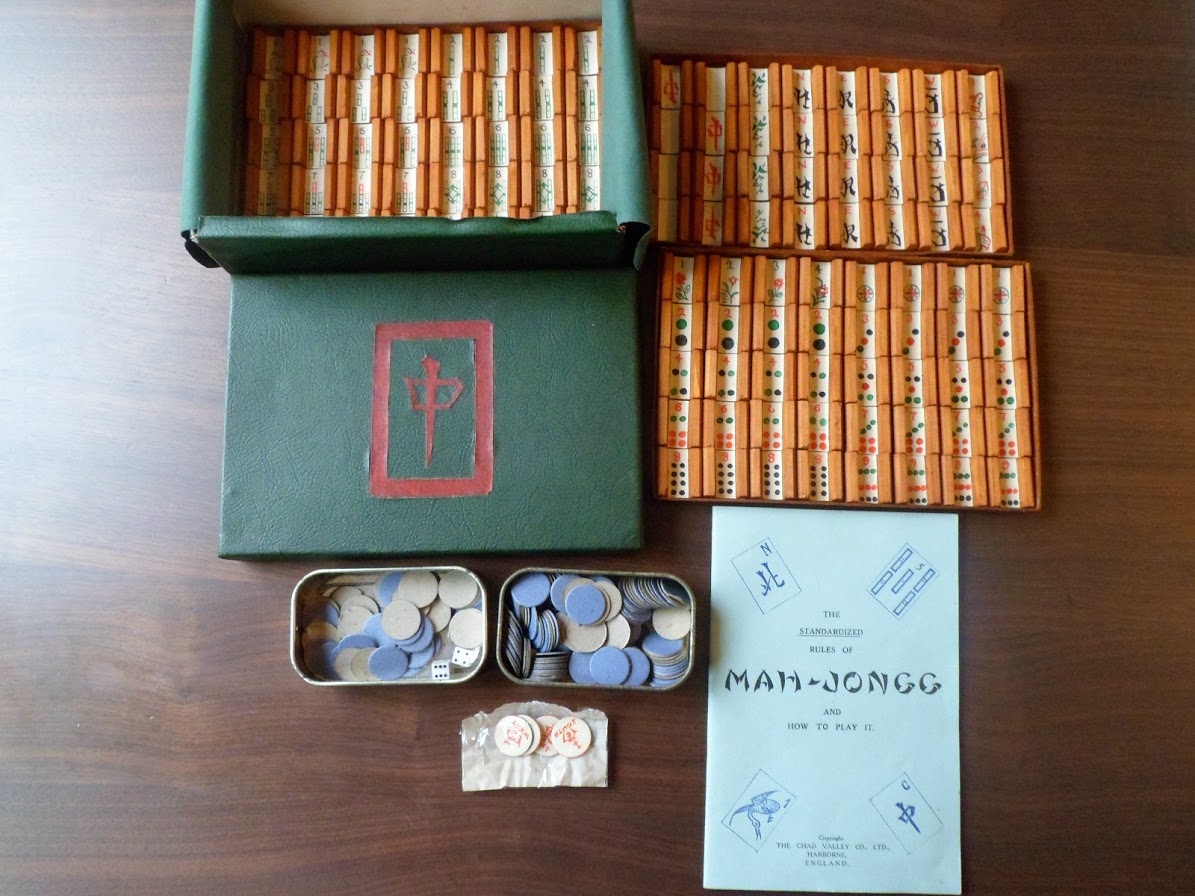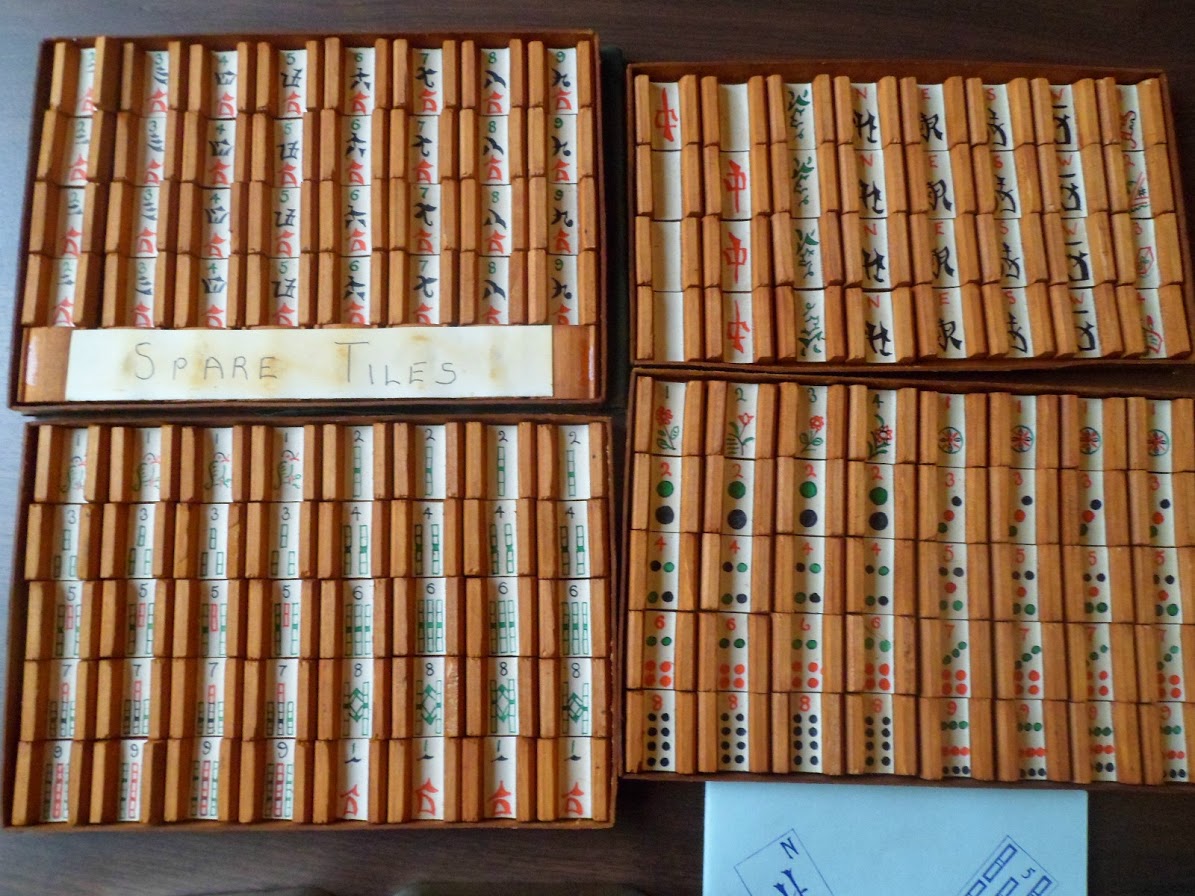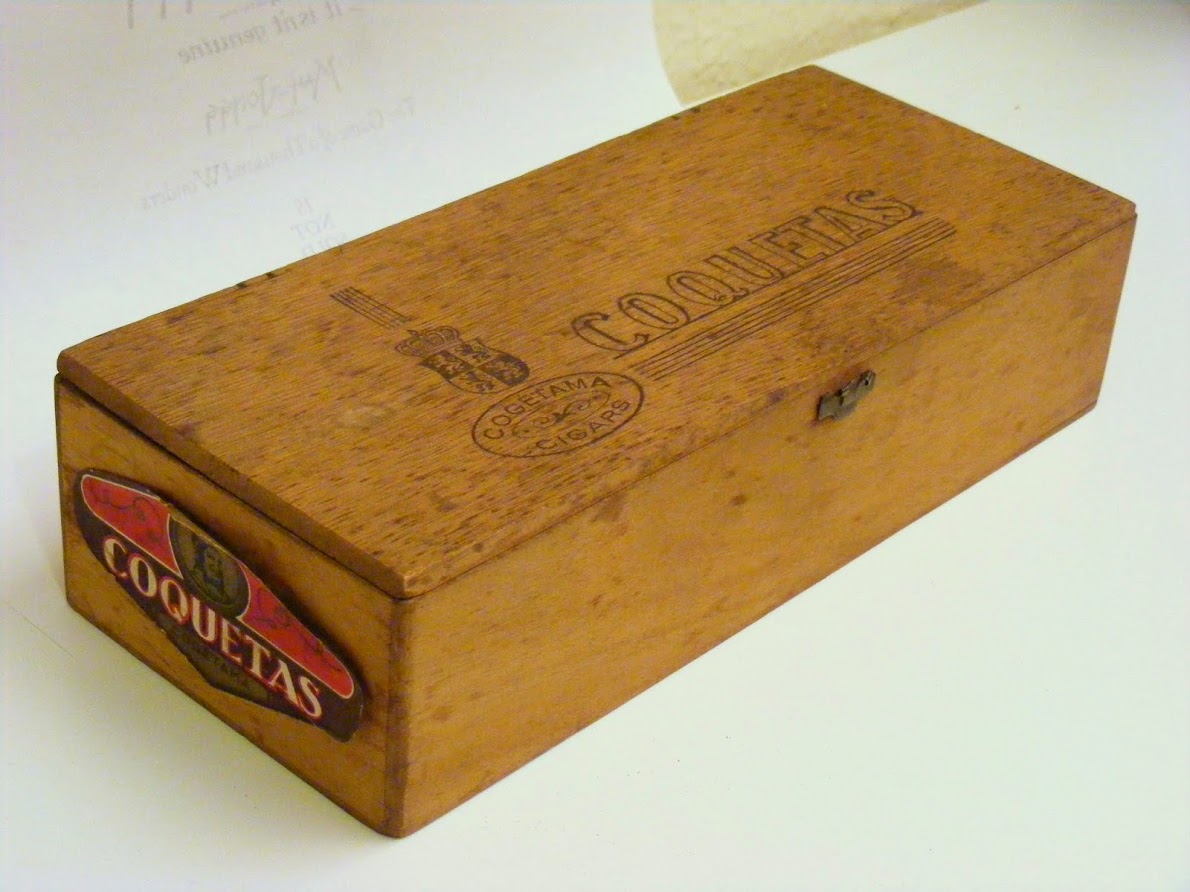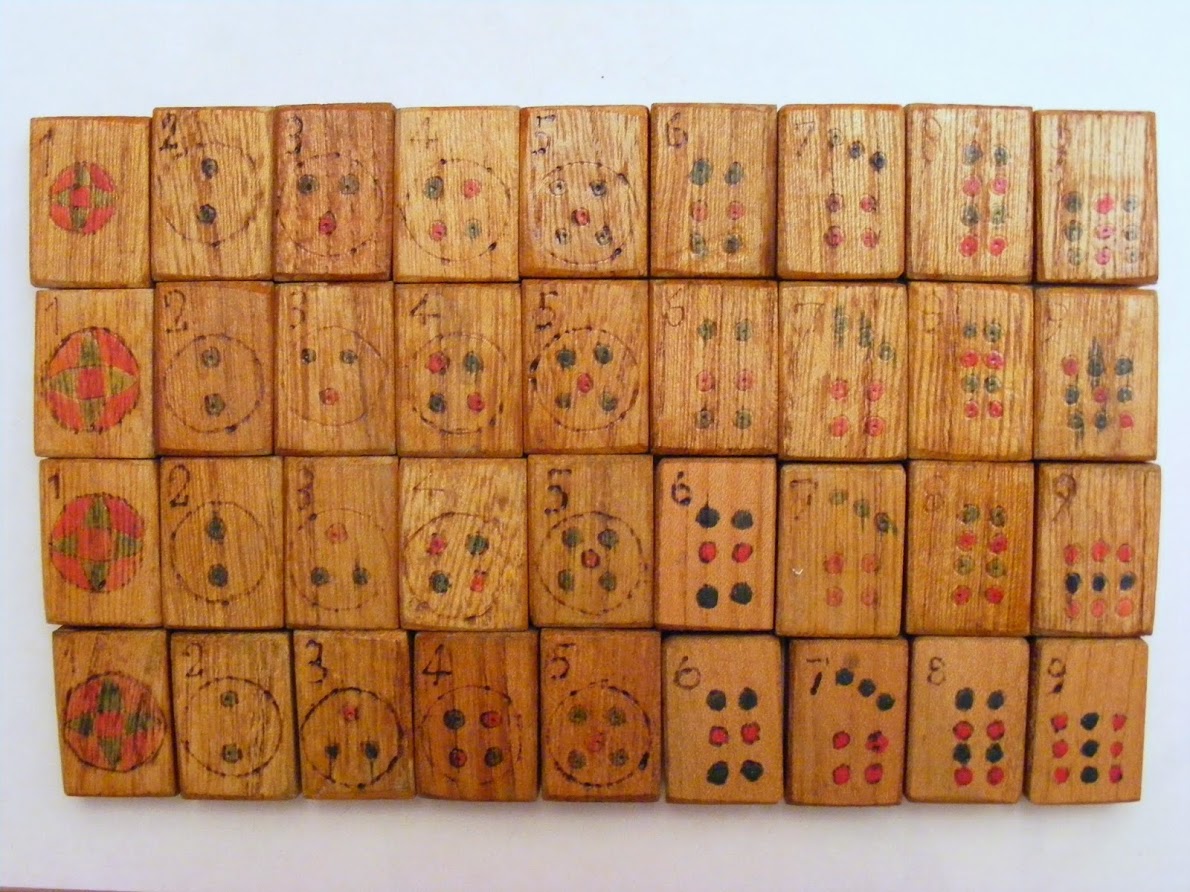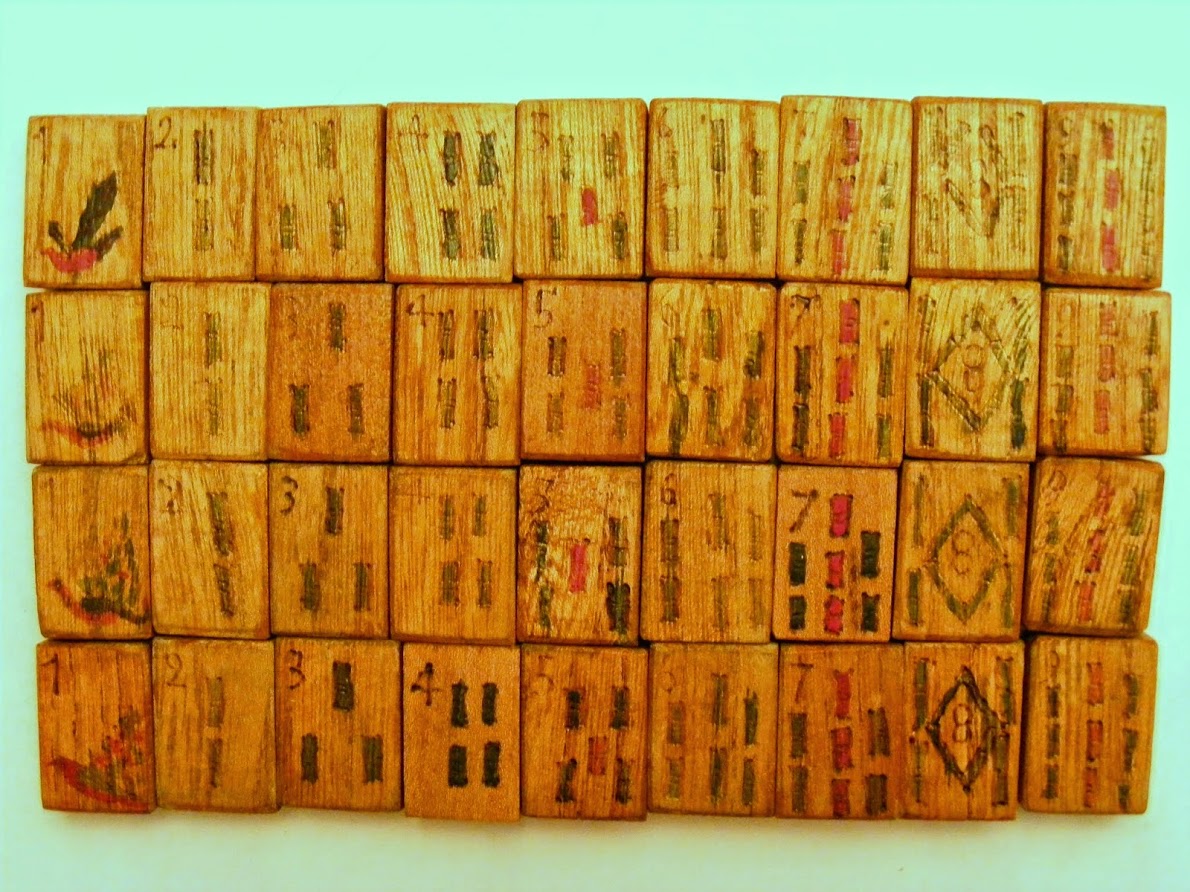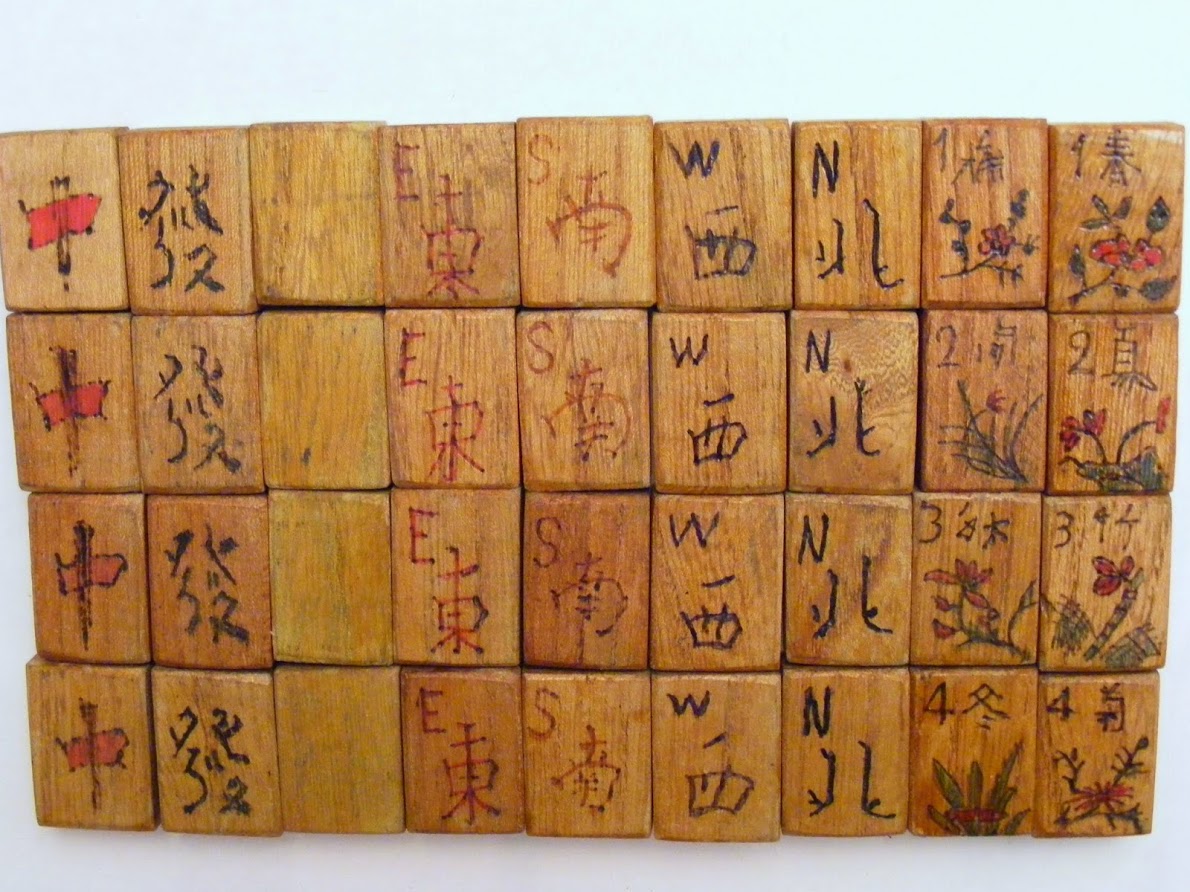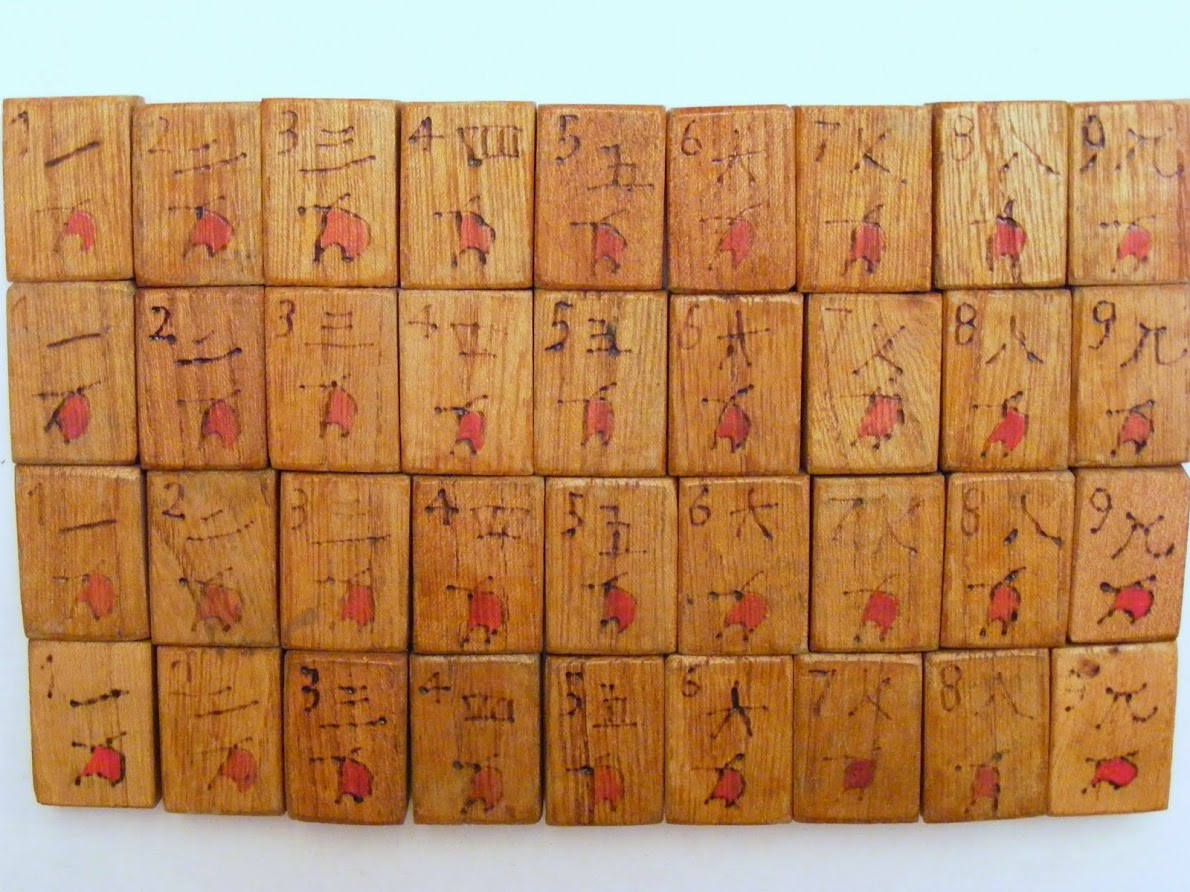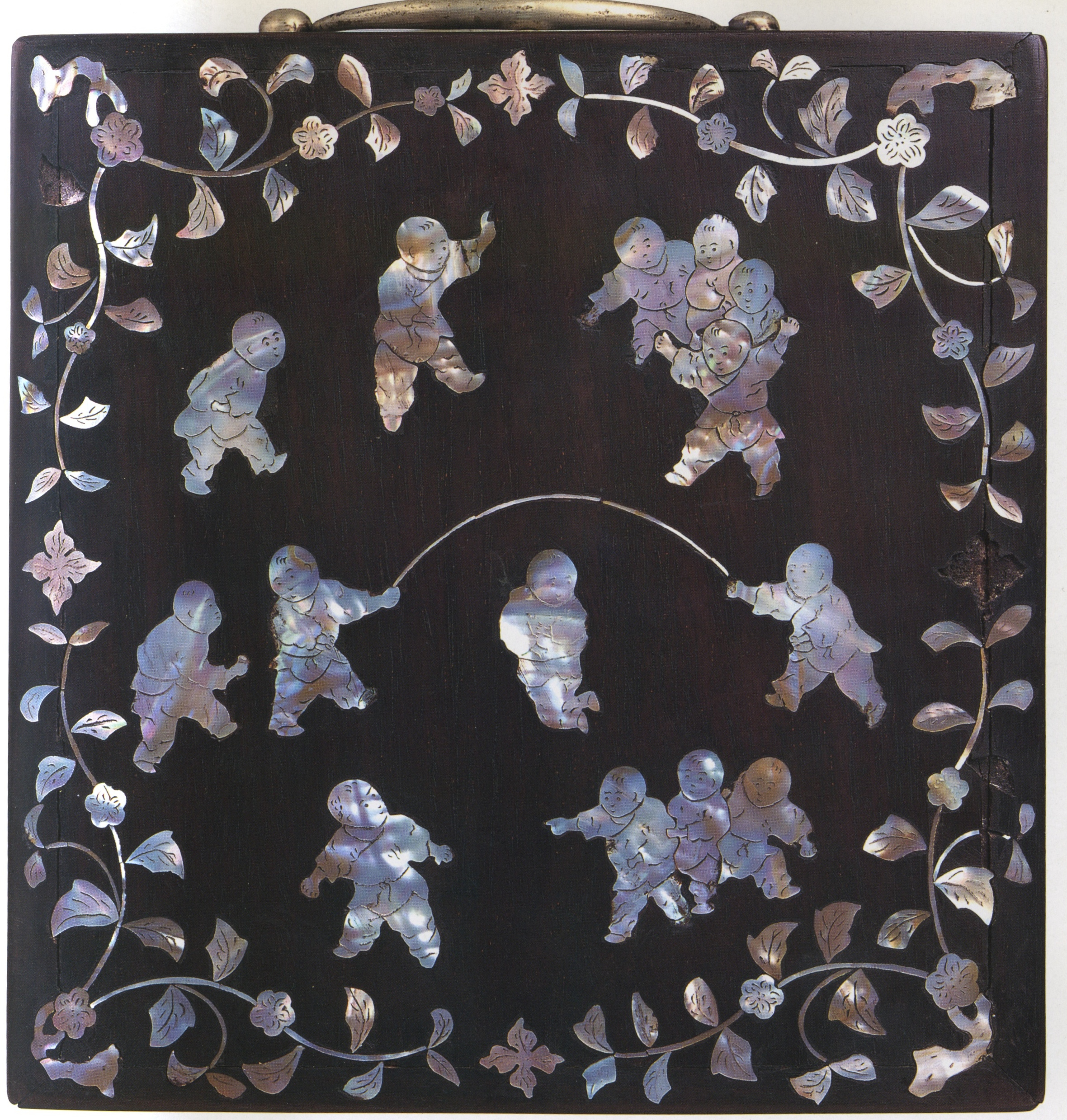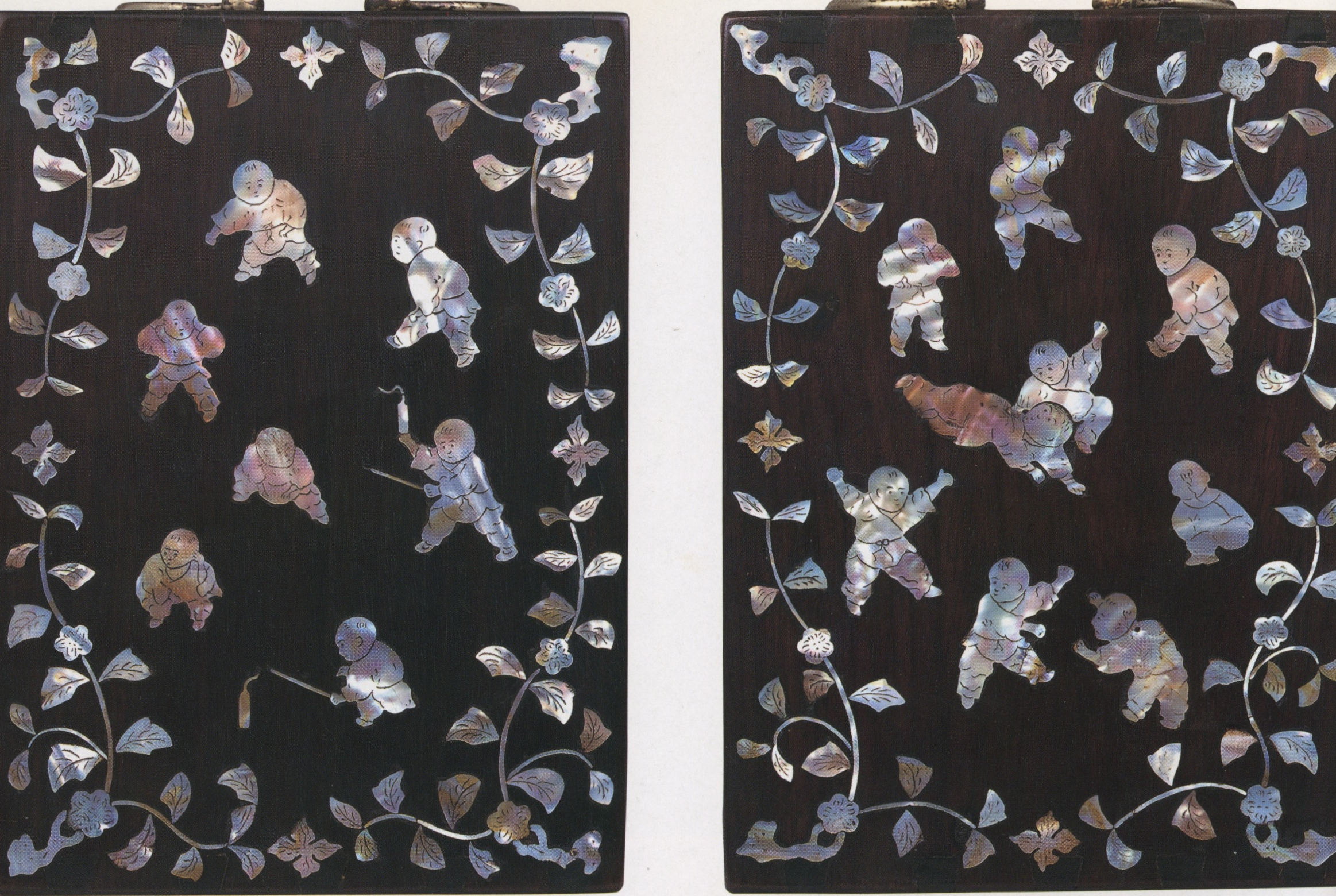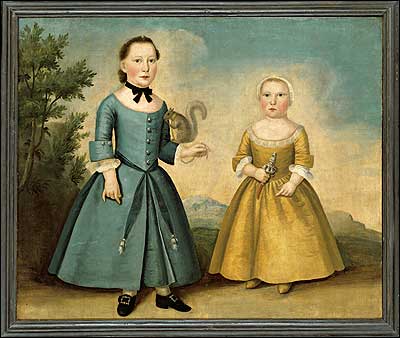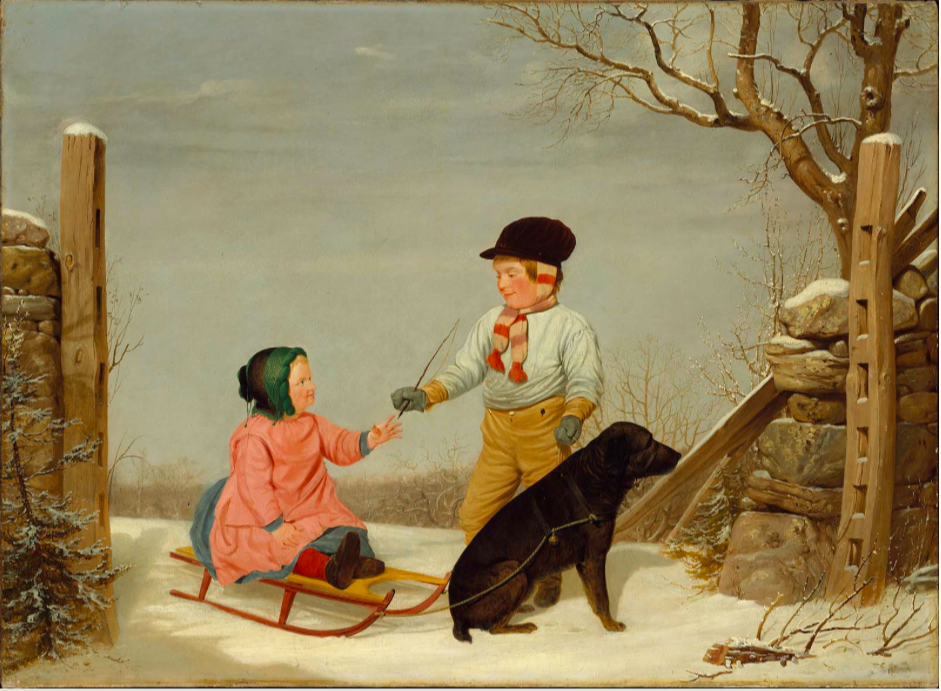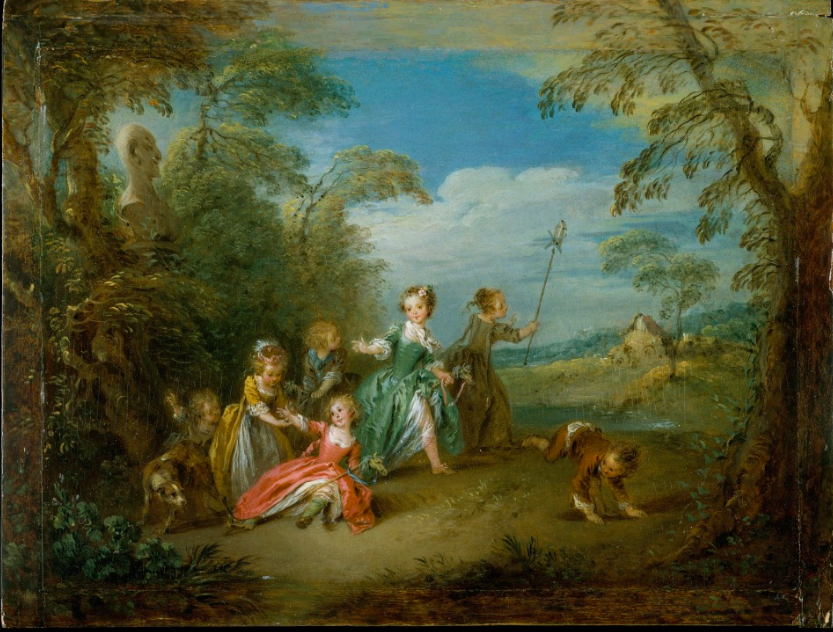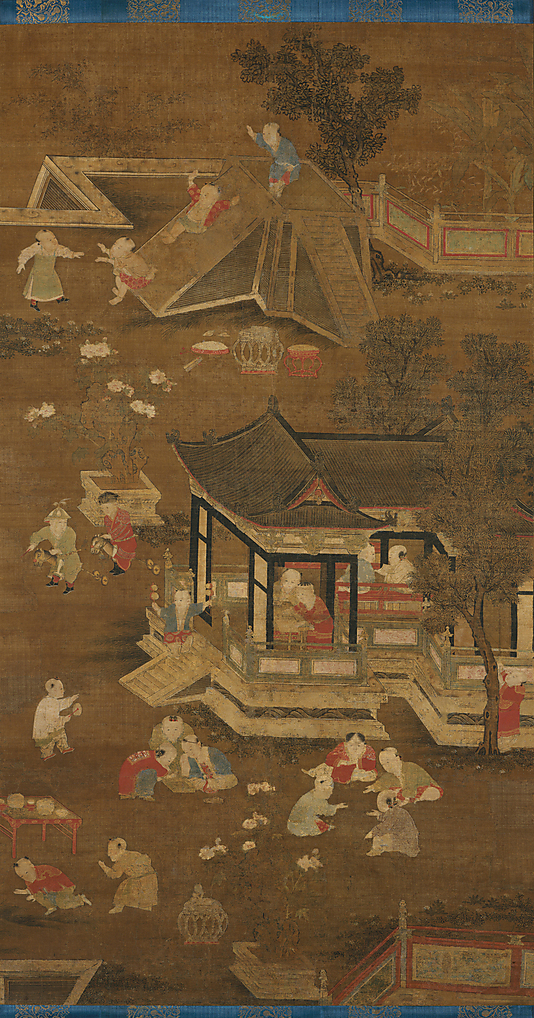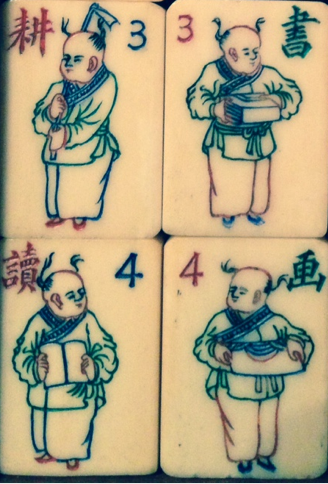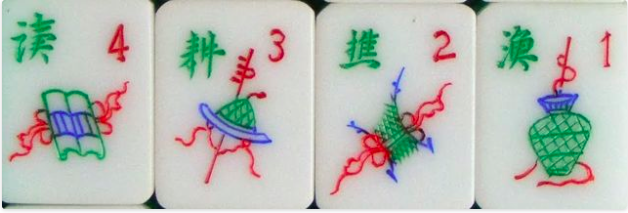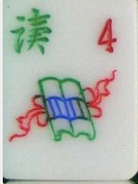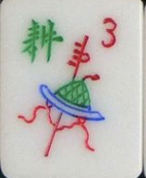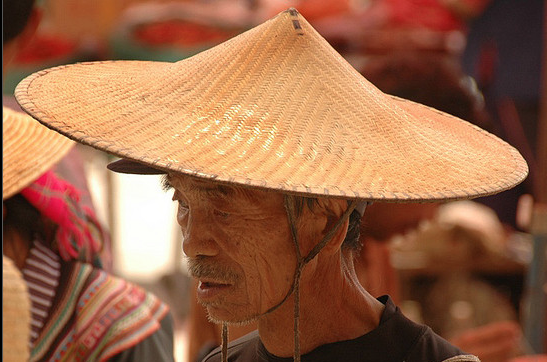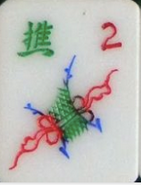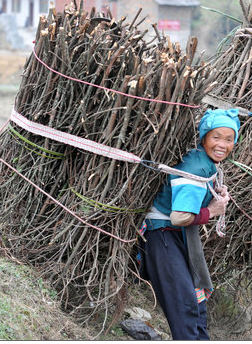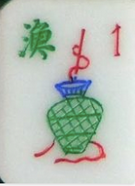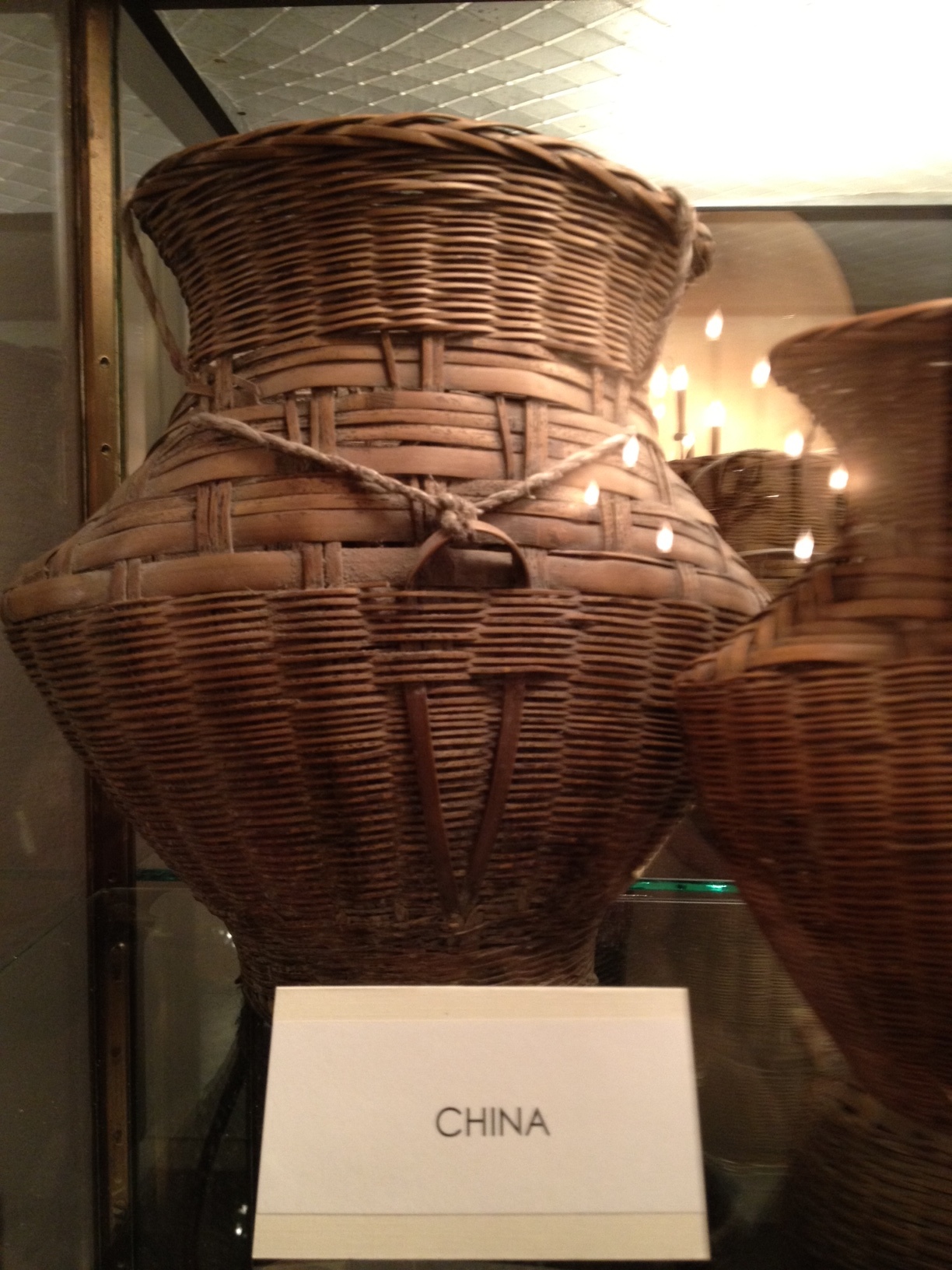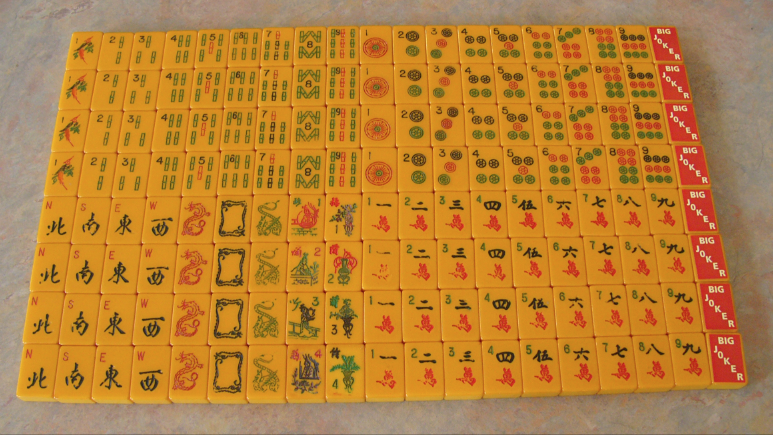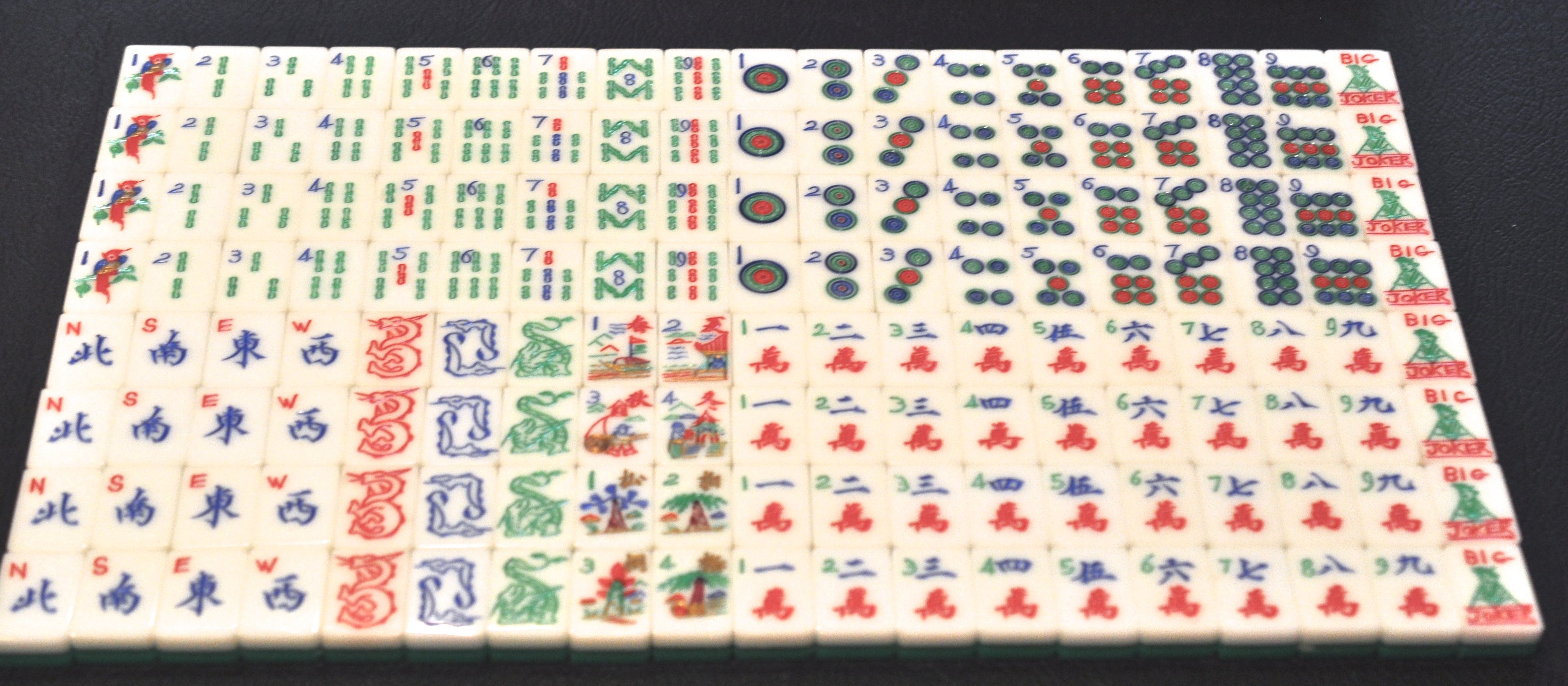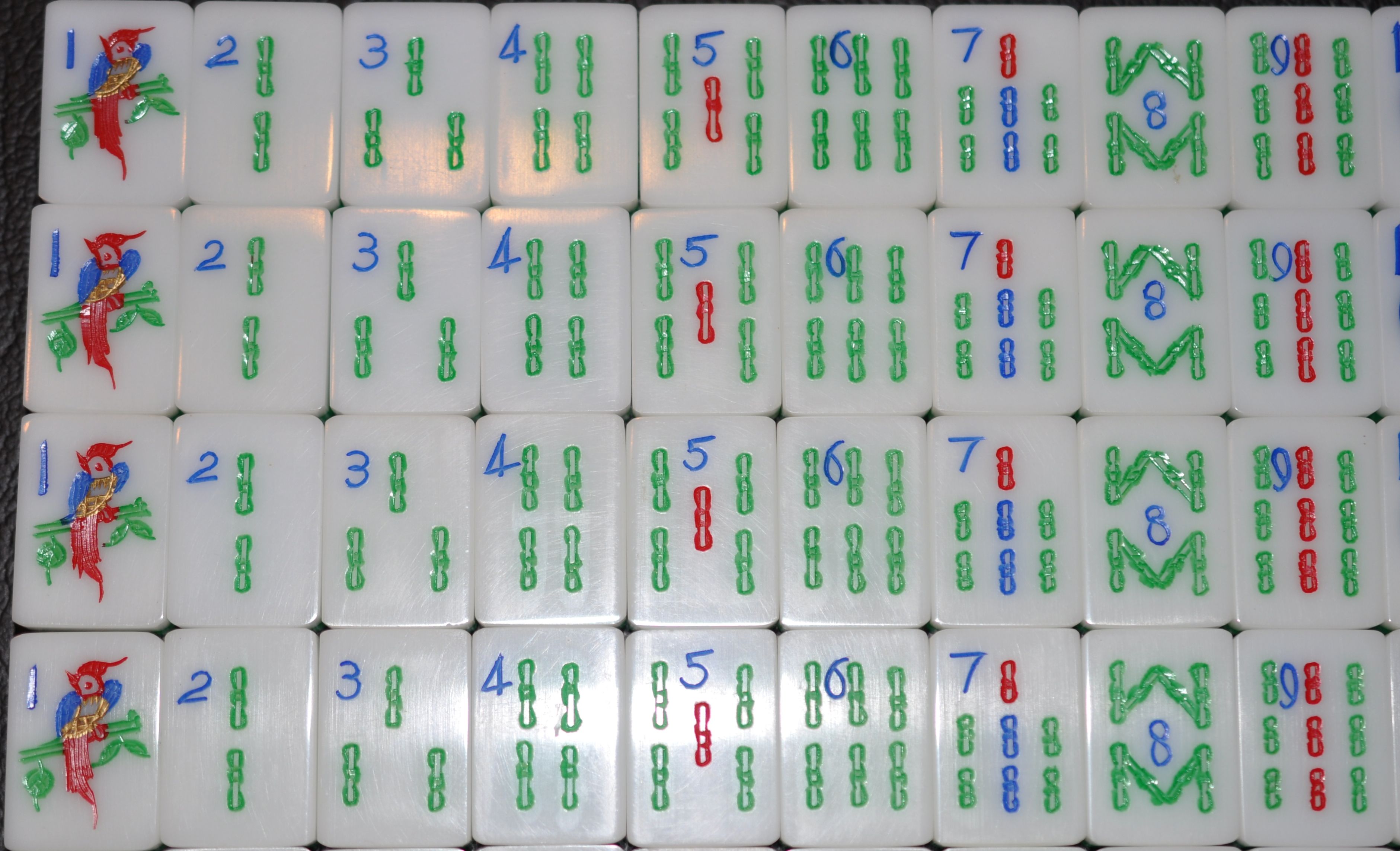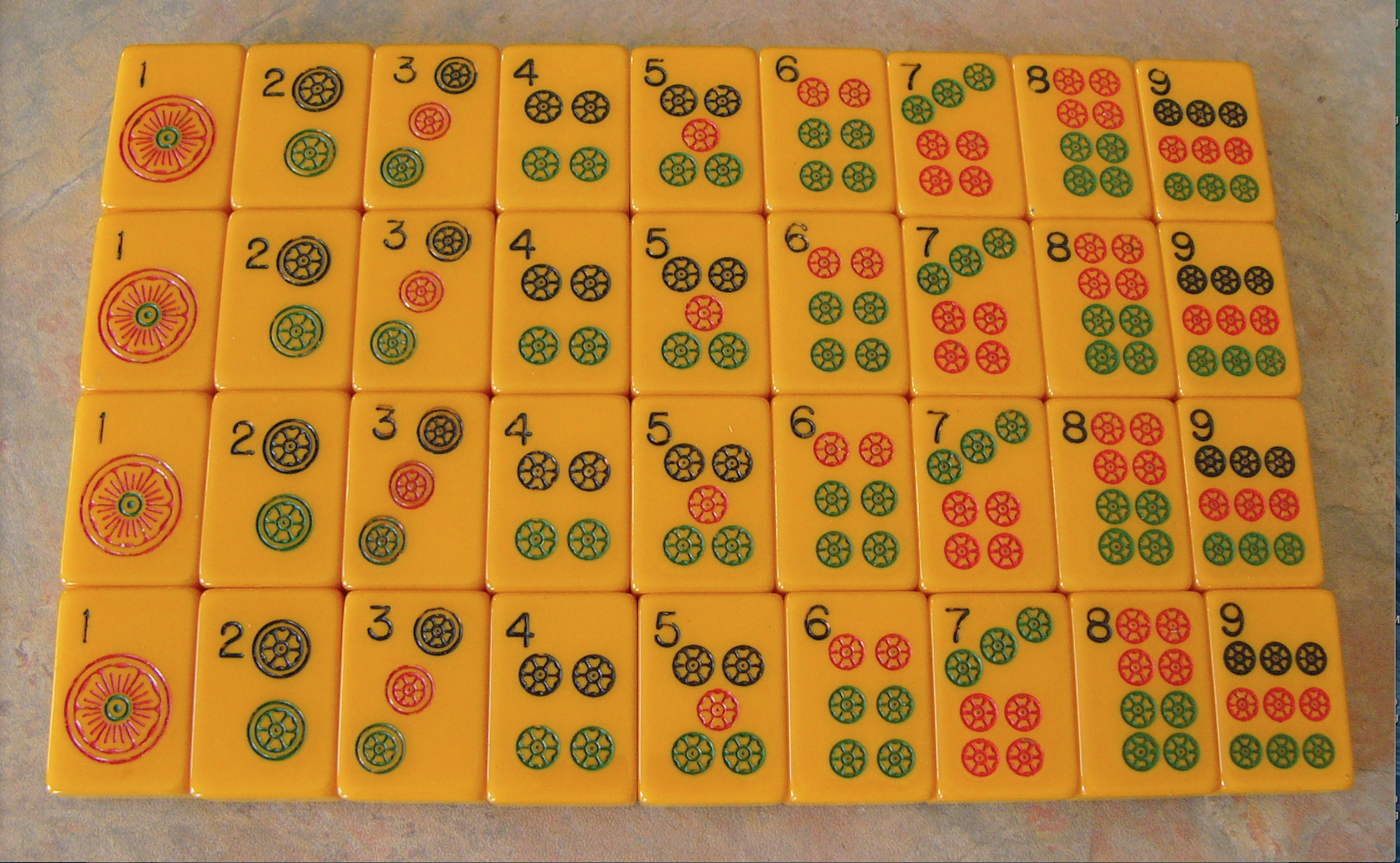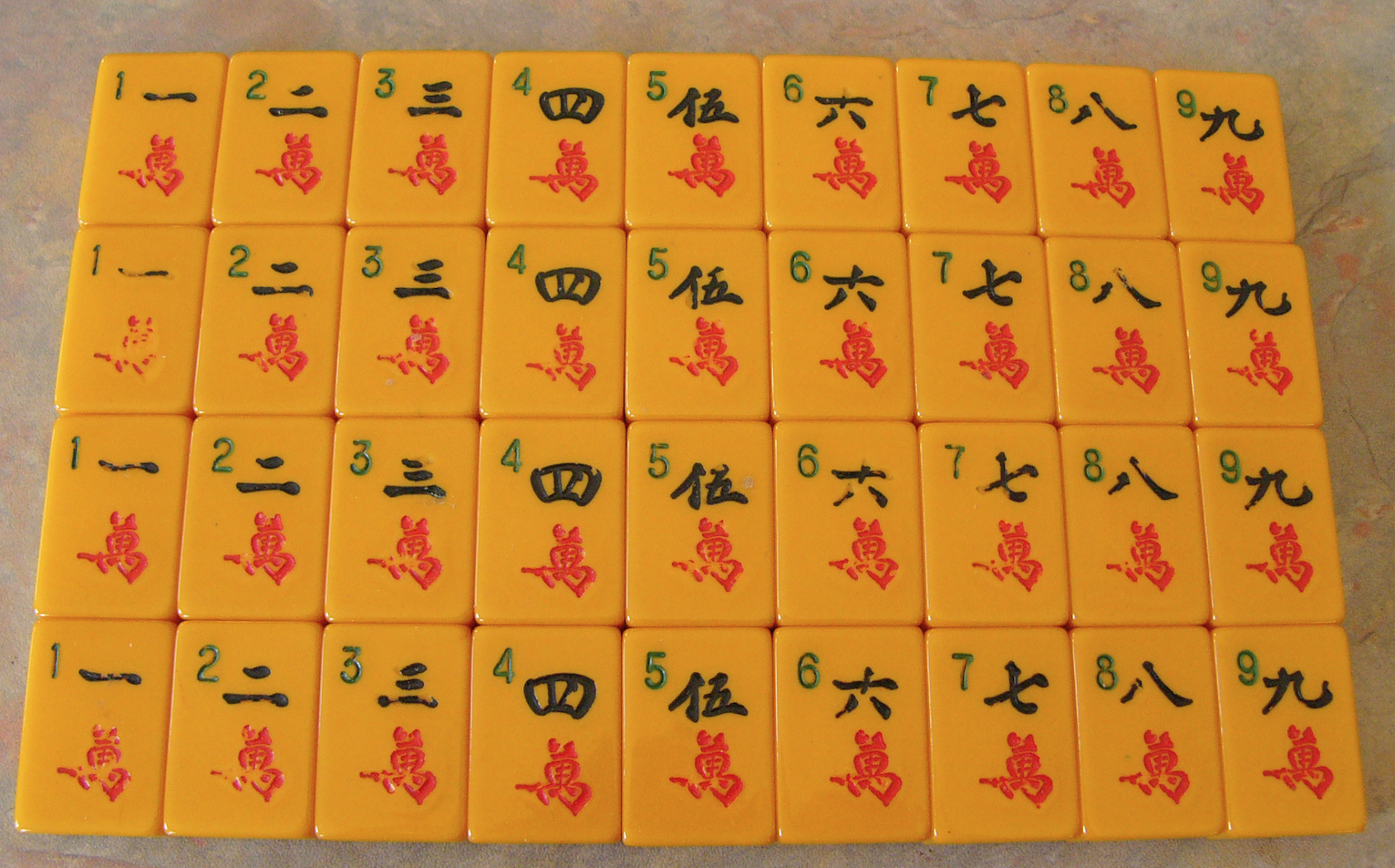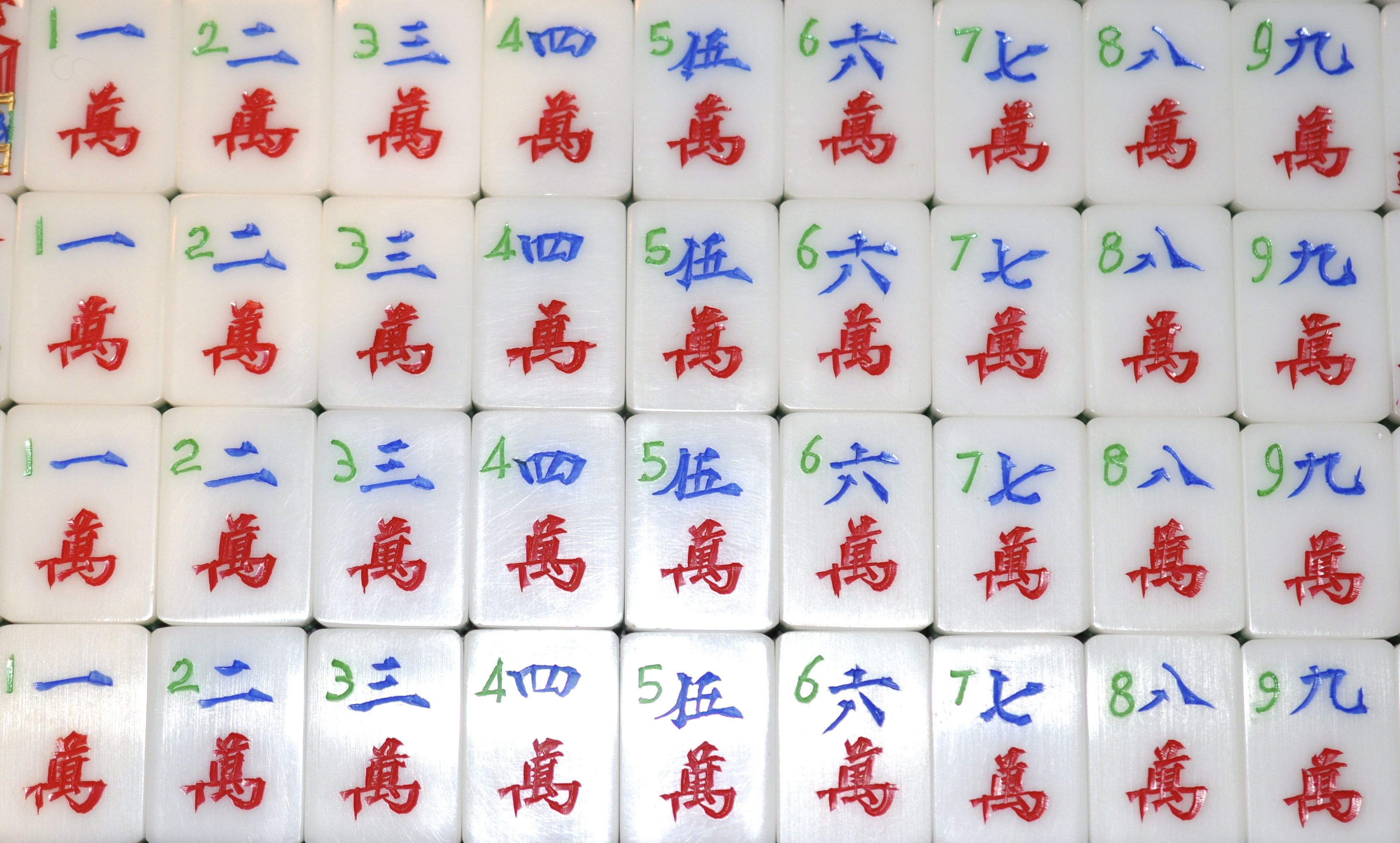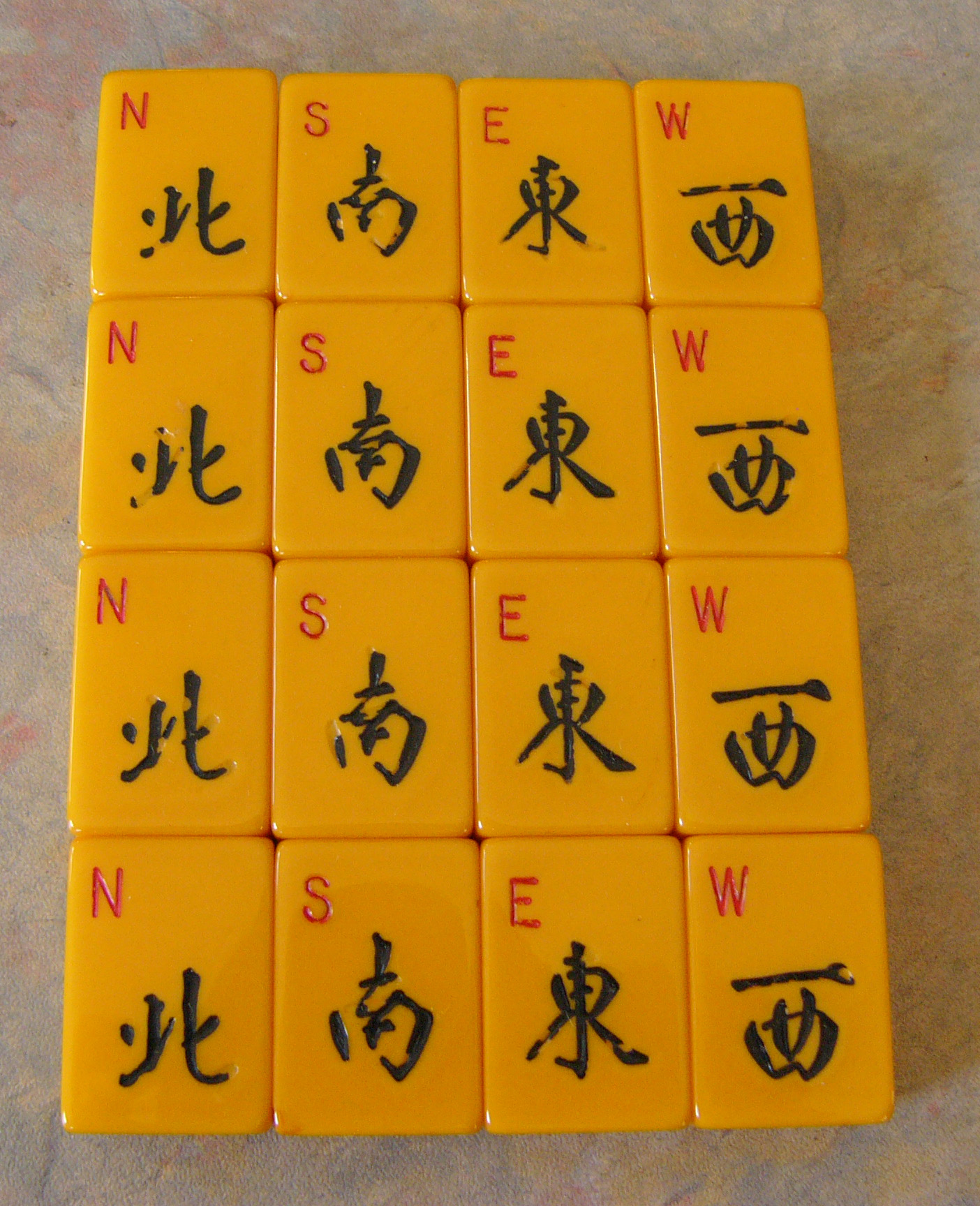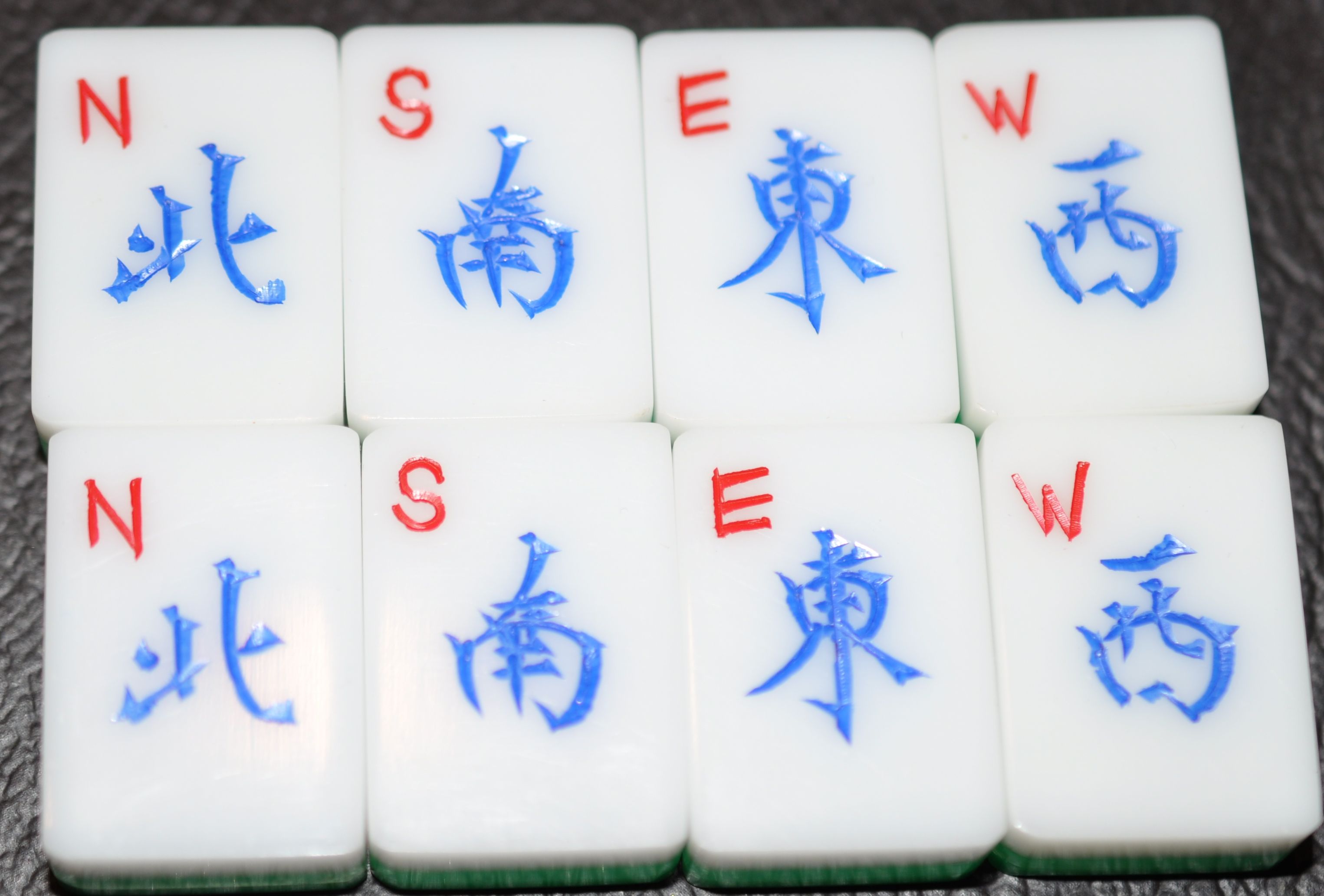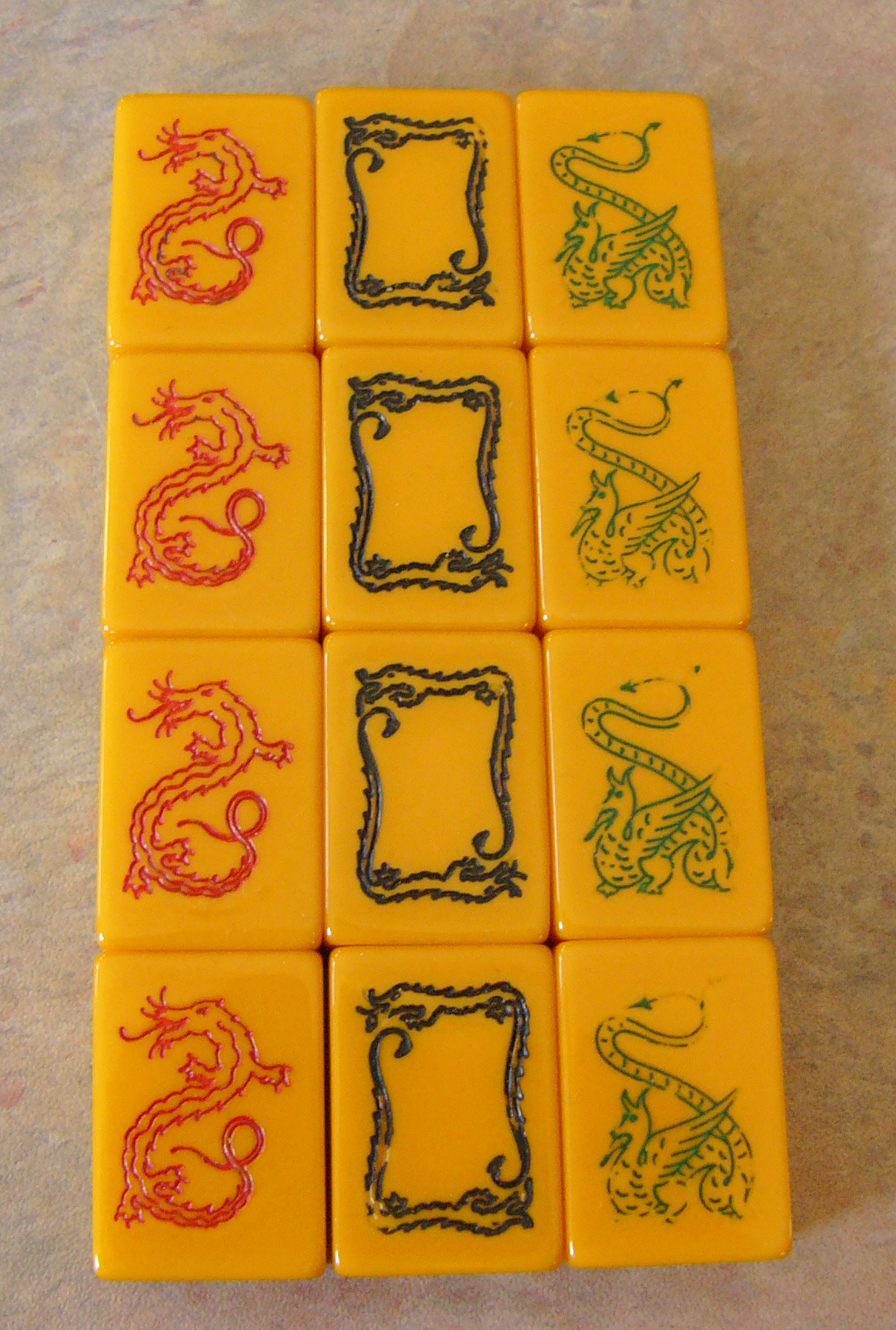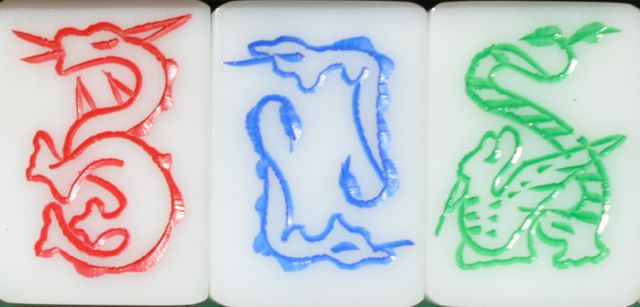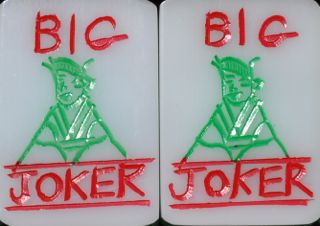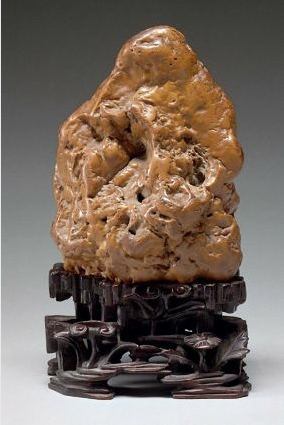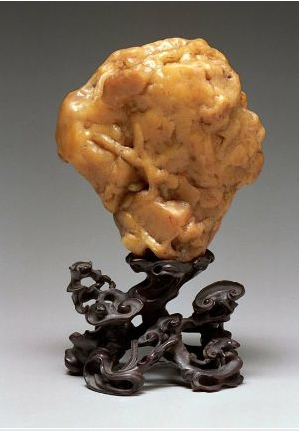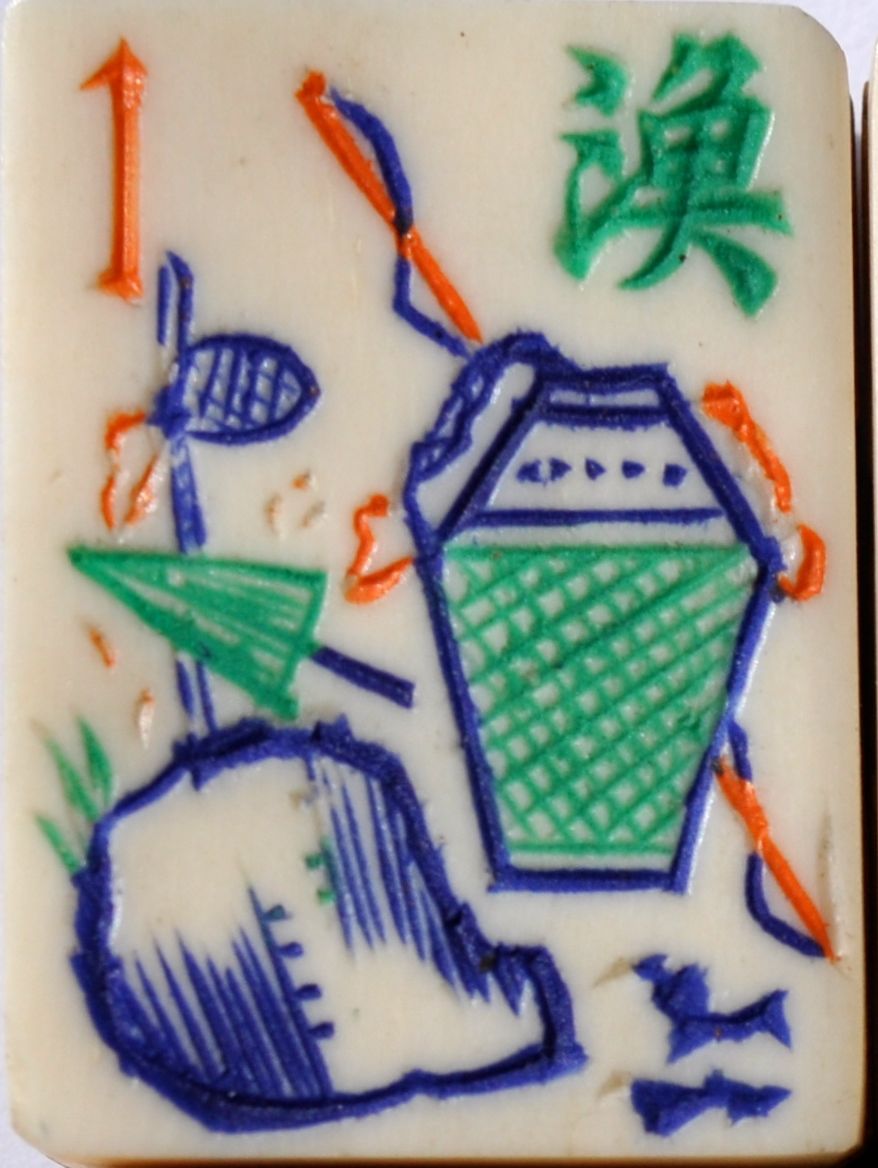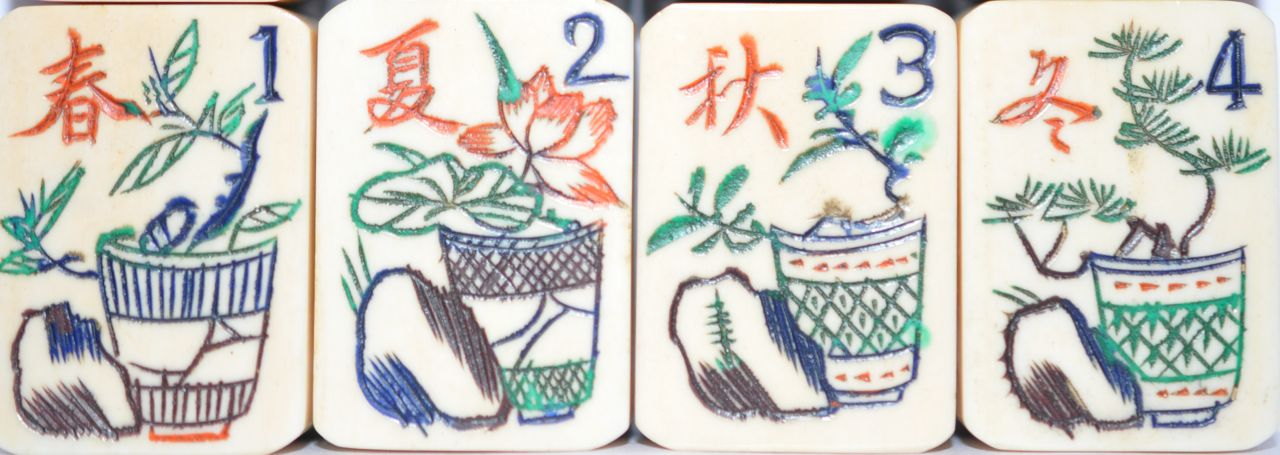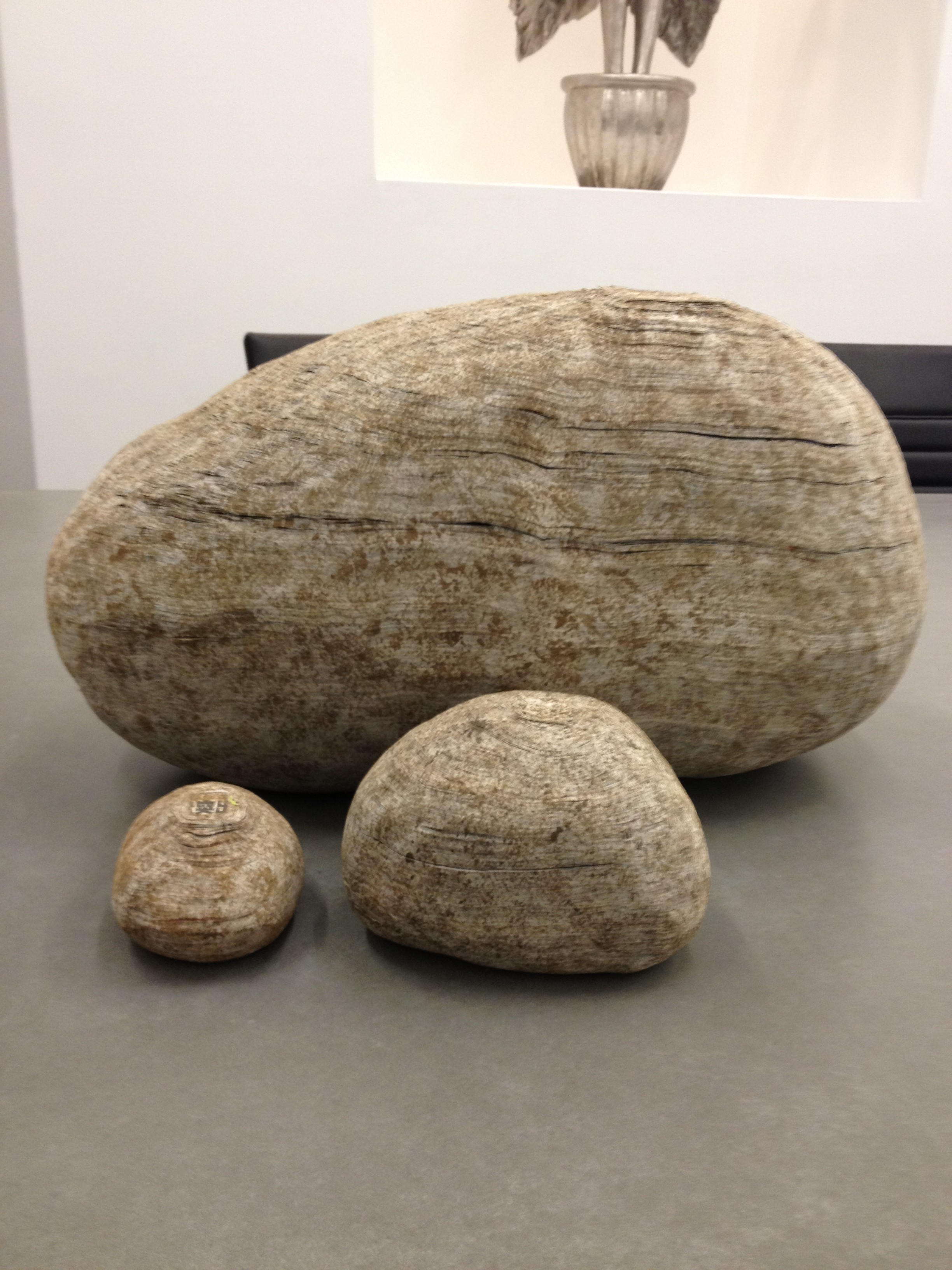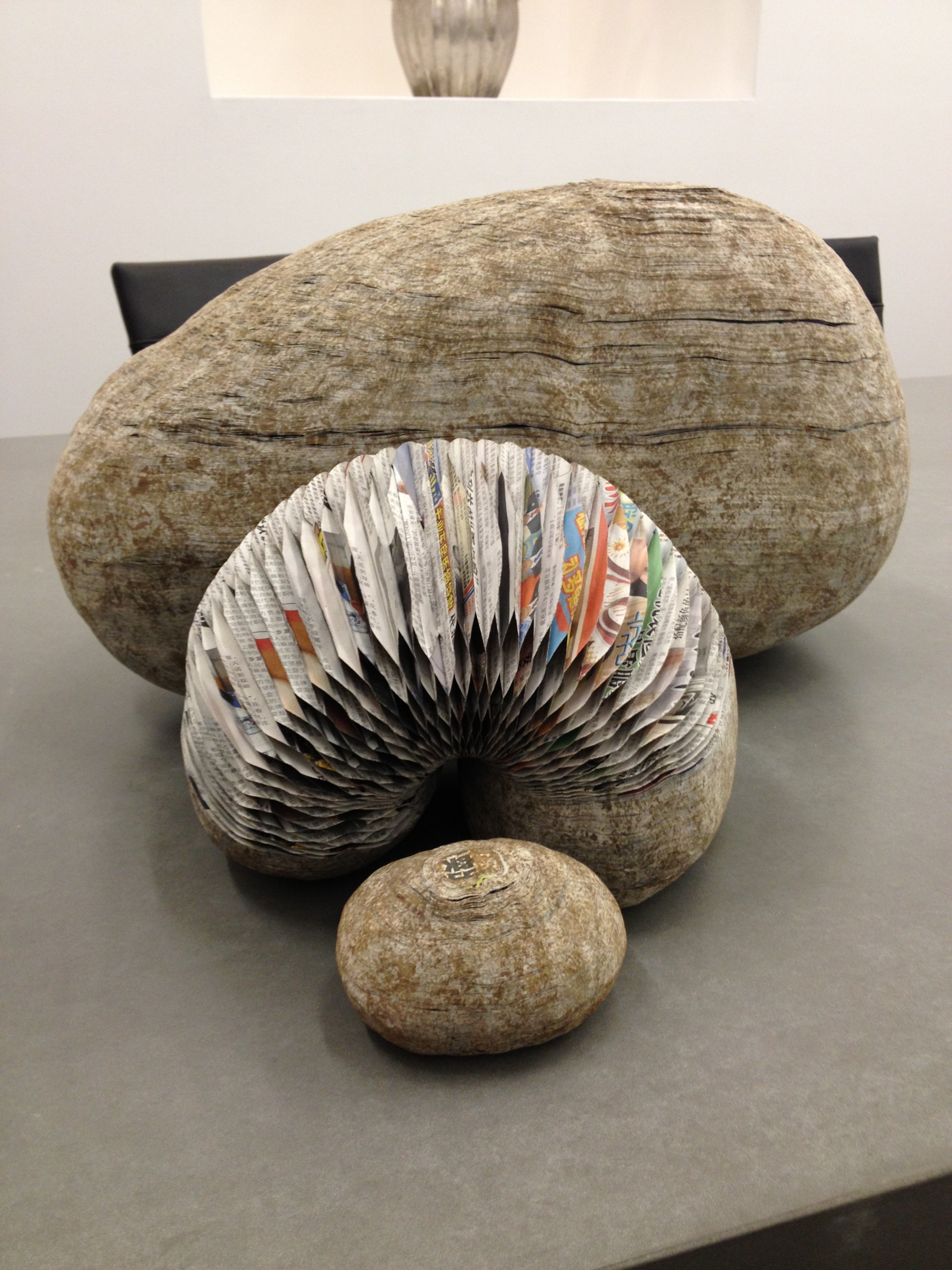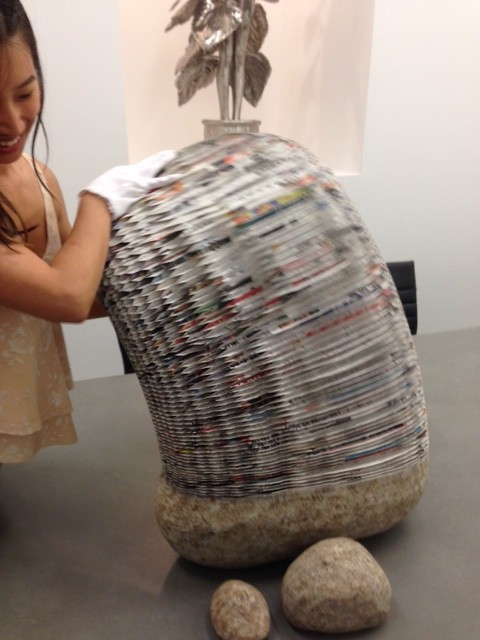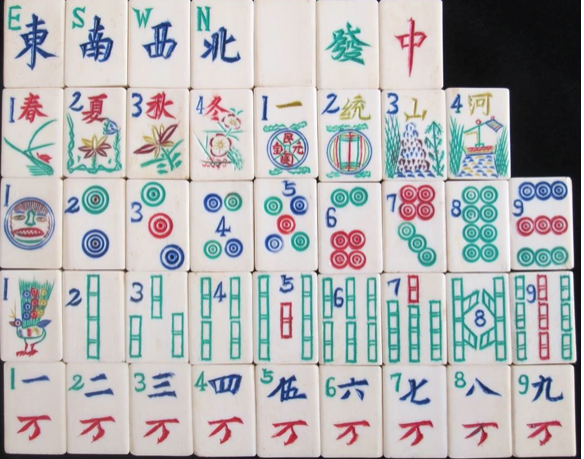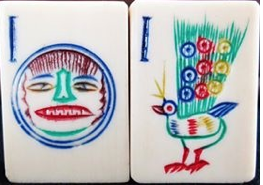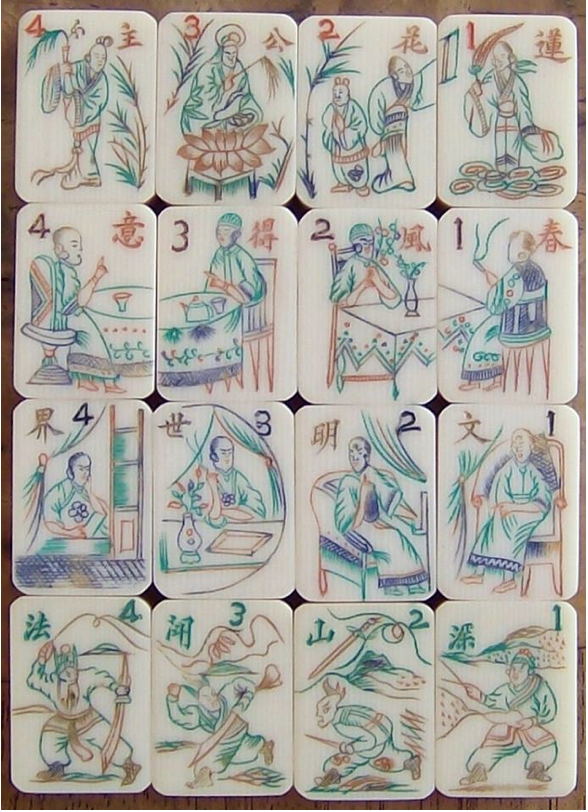One of the most popular posts on this website has been the one written about the hand-carved three layer tiles we call tri-color. Many of us feel these tiles are under-appreciated (read under-valued) at the moment, and deserve to get better recognition. These sets are particularly fun because there are so many Flower tiles, unlike most sets made in the 1920s and 1930s.
The most common back color seen on these tri-color tiles is green. Of course, the "tri-color" name itself is a misnomer, because the middle layer is clear lucite.
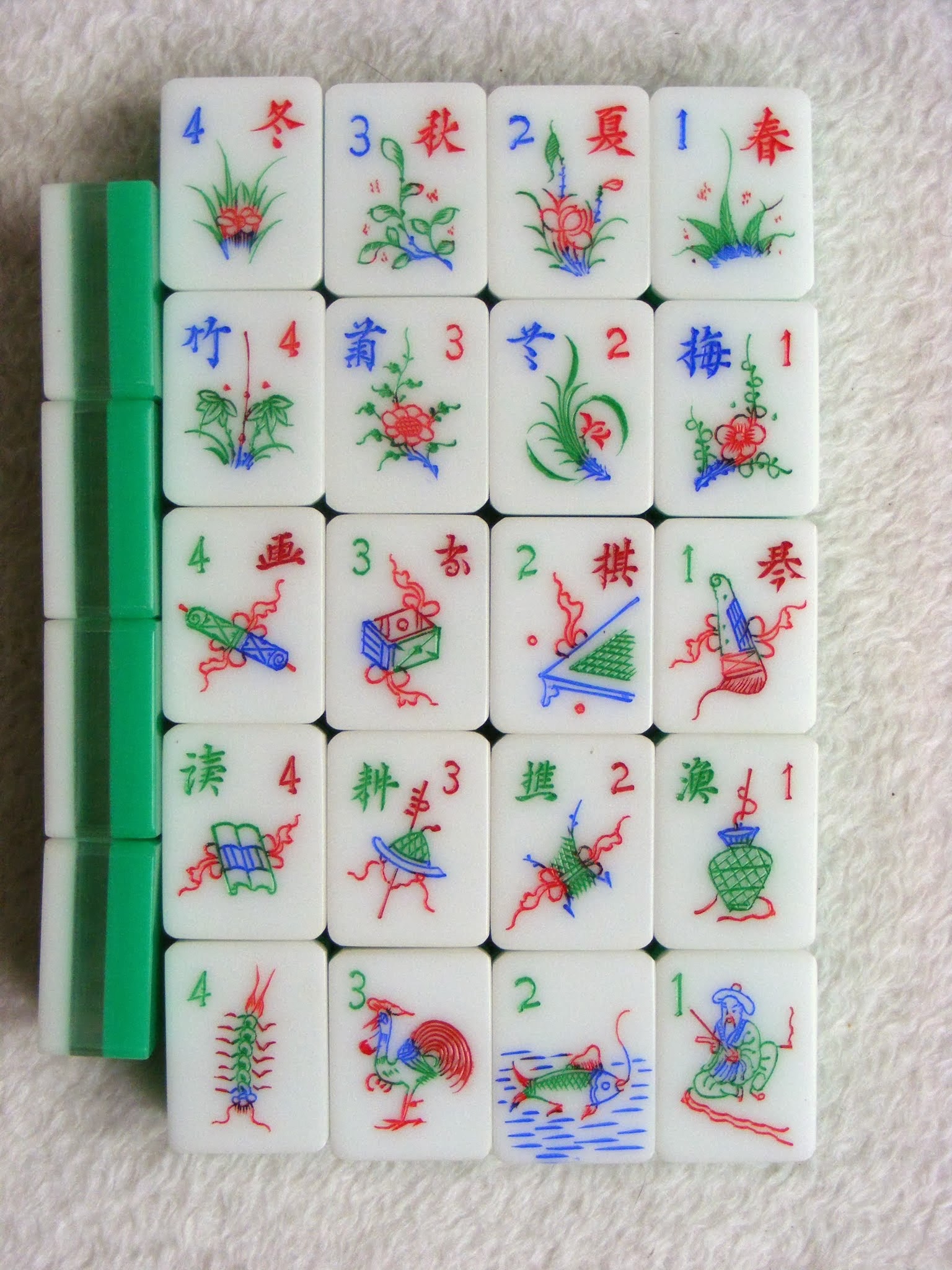
It can be challenging at times to really understand the images seen on the tiles.
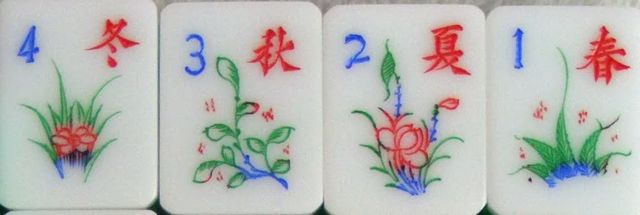
The top row above has the seasons. I find it easiest to recognize the one on the left, with the little teardrops at the bottom. That is the symbol for winter, and if you see that, you probably are looking at the other three tiles being the other seasons.

The easiest tile for me is the first one on the left, bamboo. Those two characters somewhat relate to each other, and that helps. On that line, the other characters are chrysanthemum, orchid and plum blossom.

The 3rd row shows "abbreviations" of the four arts of the scholar. We often see these on lucite tiles as other tiles, and because they are so free of details it can be hard to recognize them. But they are:
Painting: many years ago in China painting was done on long scrolls that would be rolled up, looking like tile #4. There can sometimes be two rolls, which represents a scroll half-way rolled up.
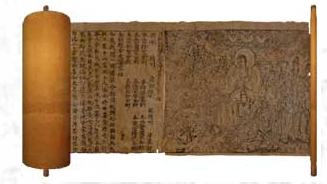
This is the earliest scroll ever found,dating from 868 in China, and it is found in the collection of the British Library, . You can see how it is rolled up, and how the abstract symbol on the tile resembles it.
From Wikipedia:
"The handscroll is a long narrow scroll for displaying a series of scenes in Chinese, Japanese, or Korean painting and calligraphy. The handscroll presents an artwork in the horizontal form and can be exceptionally long, usually measuring up to a few meters in length and around 25–40 cm in height.[2] Handscrolls are generally viewed starting from the right end.[3][4] This kind of scroll is intended to be viewed flat on a table while admiring it section for section during the unrolling as if traveling through a landscape.[4][5] In this way, this format allows for the depiction of a continuous narrative or journey.[6]"
For more on Chinese scrolls, click here
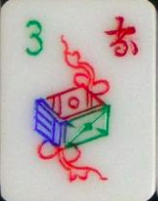
This next tile was a bit tricky. It had been thought this represents an ink stone, because of the round hole seen on the top that would have been used to grind the ink stick into powder which would then be mixed with water to make ink for calligraphy. Reader Ray Heaton came up with the correct interpretation which was confirmed by a Chinese art Scholar.
From Ray:
"I suggest that the tile from the Four Arts described as showing an Ink stone rather shows a set of books that are wrapped and bound by ribbon (ribbons are used to show the auspicious nature of an object)."
The stack of books represents the learning required if one wanted to become a scholar and have a chance to get a position in government.
And certainly all of these tile images have the ribbons with them, indicating their auspicious nature.
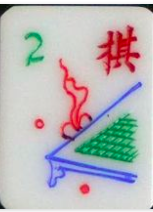
Go: A Chinese game played with round pieces. This symbol is sometimes also considered to be the game of chess. Both boards have small squares on them. Given we see two round pieces to the side and below the board, this may well be "go." or "weiqi."
From Wikipedia:
"Go (simplified Chinese: 围棋; traditional Chinese: 圍棋; pinyin: wéiqí, Japanese: 囲碁 igo,[nb 2] common meaning: "encircling game", Korean: 바둑 baduk[nb 3]) is a board game for two players that originated in China more than 2,500 years ago. Strategy is significant to the game despite its relatively simple rules.
The two players alternately place black and white playing pieces, called "stones", on the vacant intersections (called "points") of a grid of 19×19 lines (beginners often play on smaller 9×9 and 13×13 boards).[2] The objective of the game is to use one's stones to surround a larger total area of the board than the opponent.[3] Once placed on the board, stones may not be moved, but stones can be removed from the board if captured; this is done by surrounding an opposing stone or group of stones by occupying all orthogonally-adjacent points.[4] Players continue in this fashion until neither player wishes to make another move; the game has no set ending conditions. When a game concludes, the territory is counted along with captured stones and komi to determine the winner.[5] Games may also be won by resignation.
Go originated in ancient China. Archaeological evidence shows that the early game was played on a board with a 17×17 grid, but by the time the game had spread to Korea and Japan, in about the 5th and 7th centuries AD respectively, boards with a 19×19 grid had become standard.[6]"
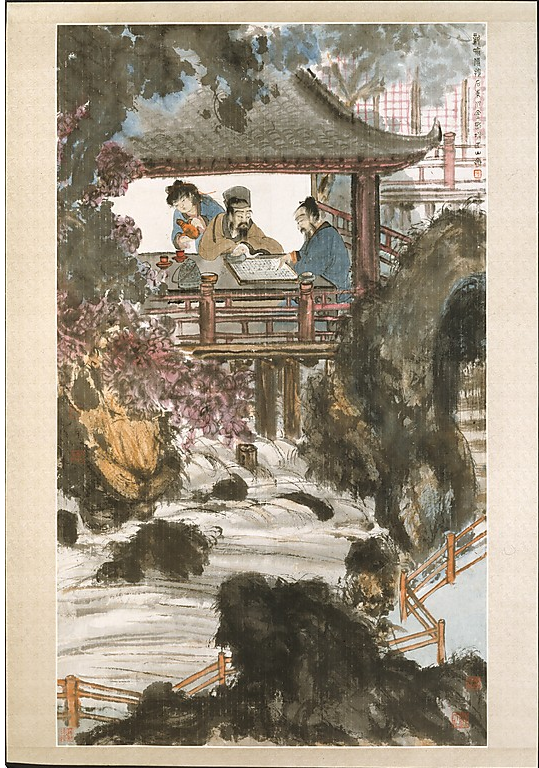
The above work is from the collection of the Metropolitan Museum, and the scroll shows scholars playing the game.
For more on "weiqi" click here
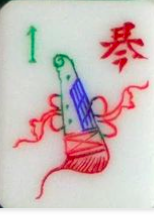
Qin or lute: music. Every scholar knew how to play this instrument. The lute was often carried in a soft silk pouch.
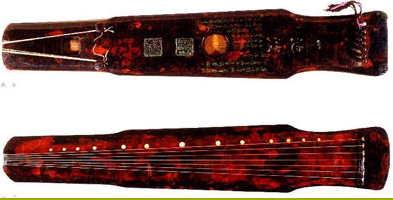
The remaining two rows will be discussed in the next post.
Our thanks to Tony for providing the Mahjong photographs.
***Reader Ray has suggested this might be a stack of books, tied with a ribbon. If anyone knows, please send me a comment. I will continue to try to find the answer.

